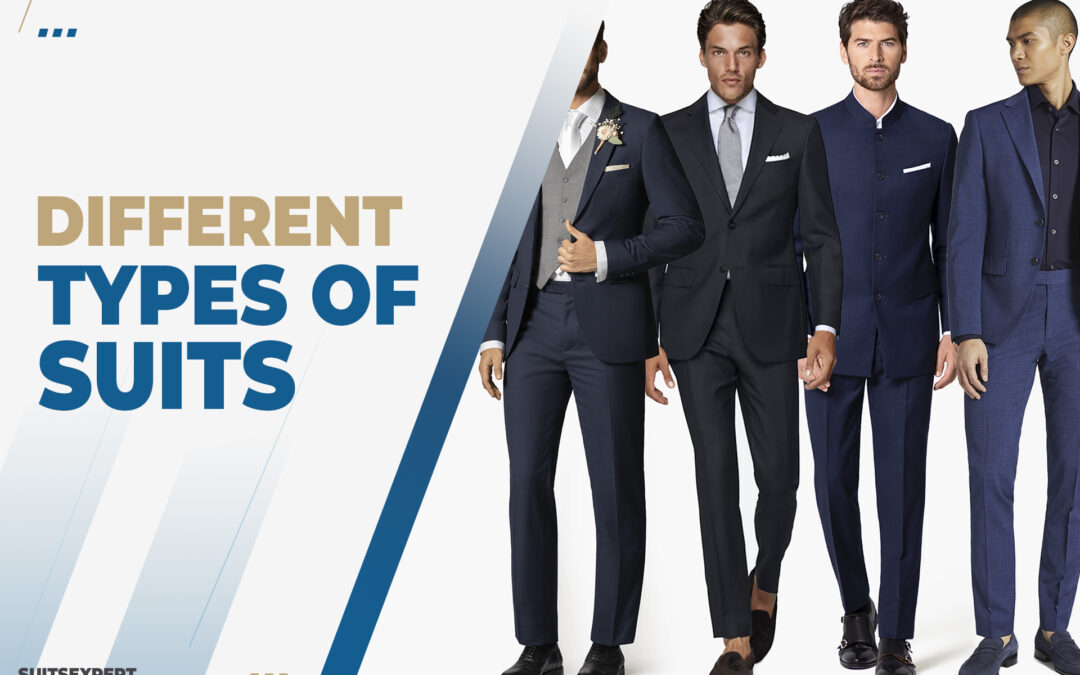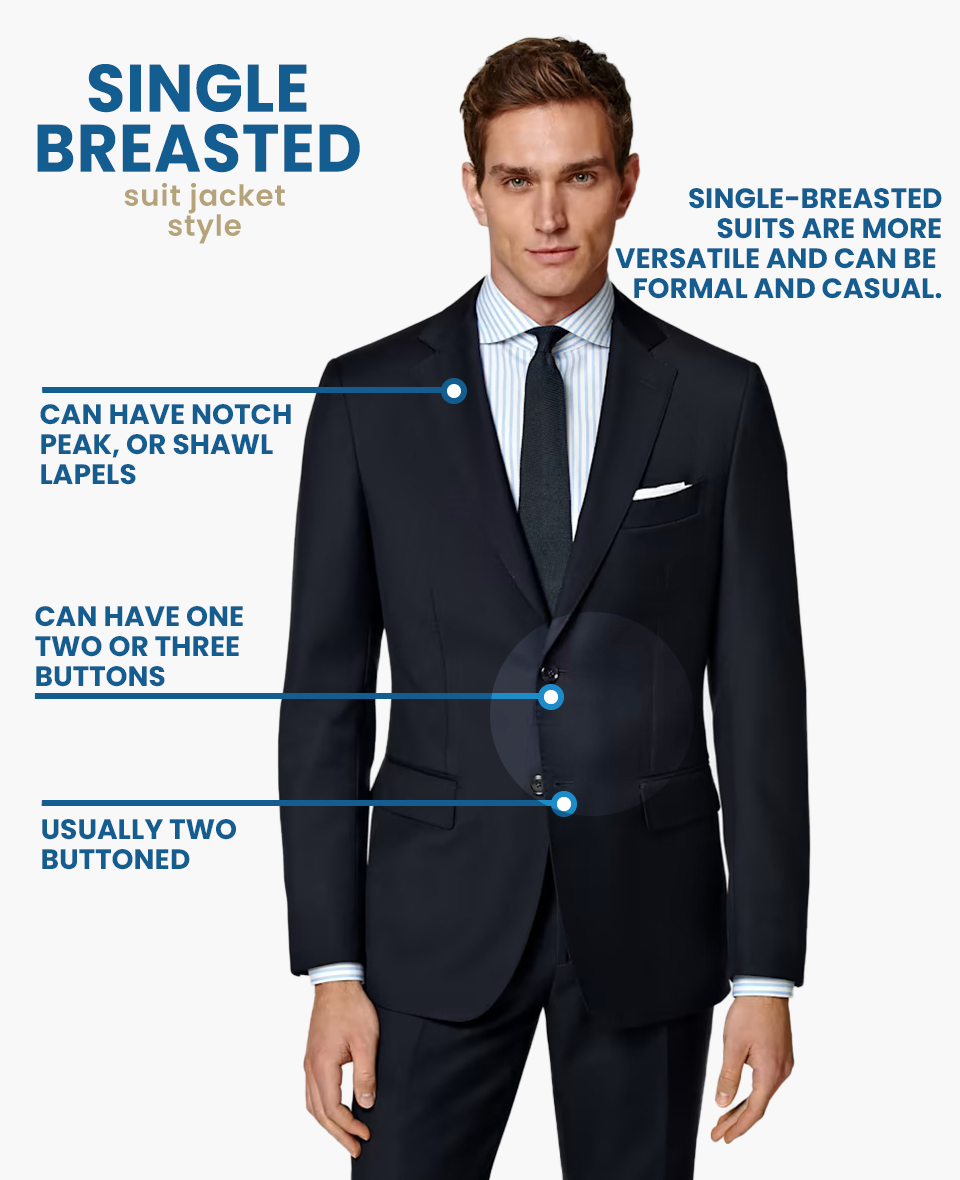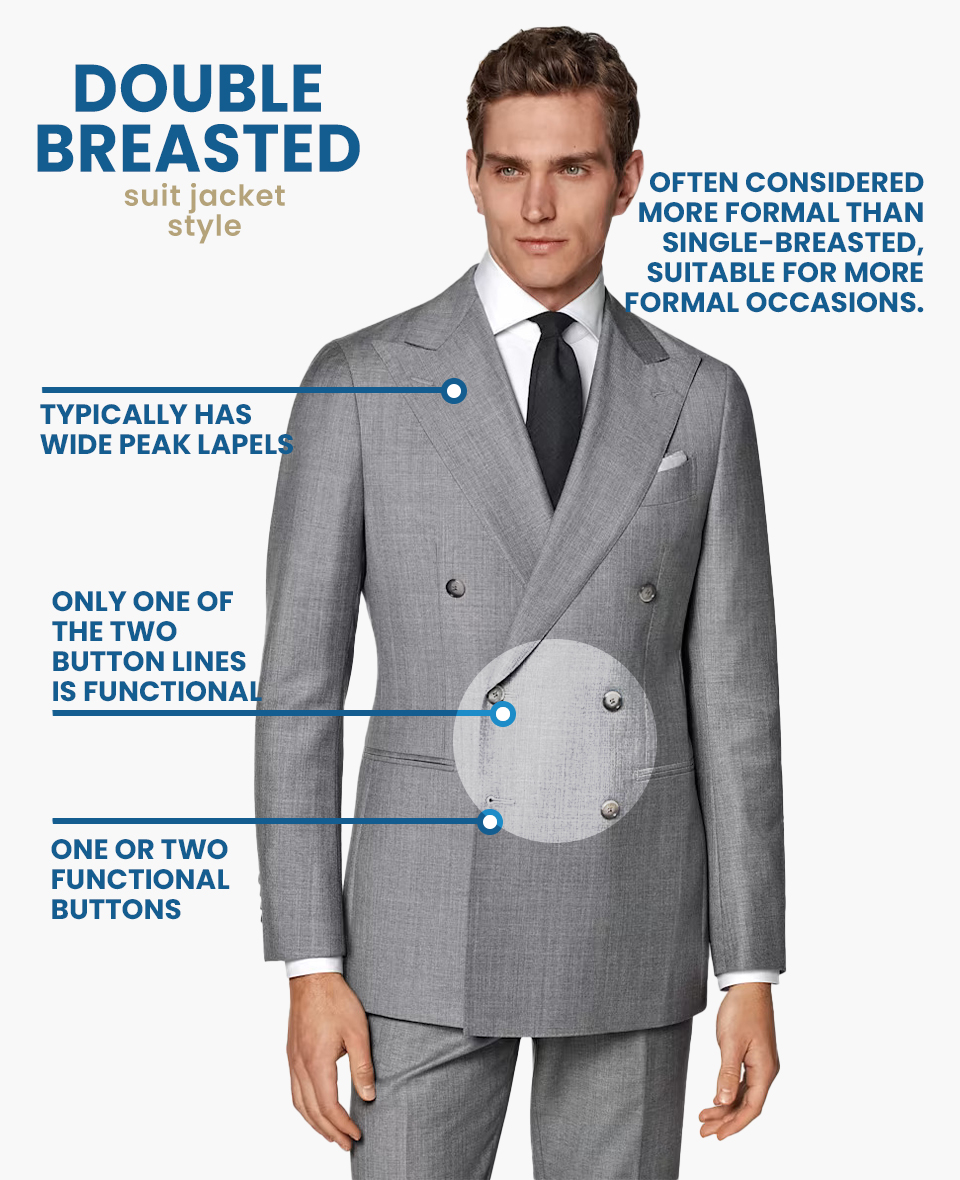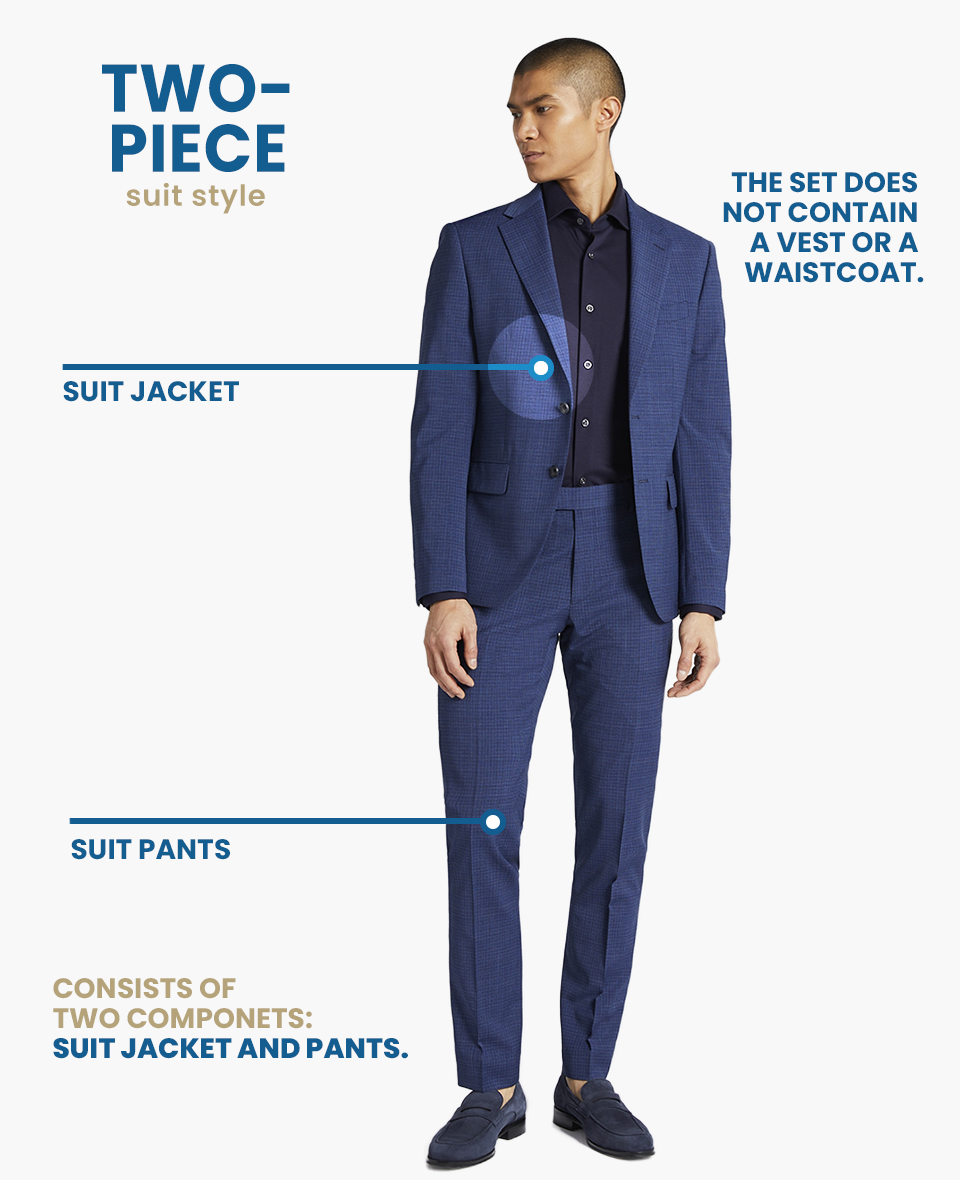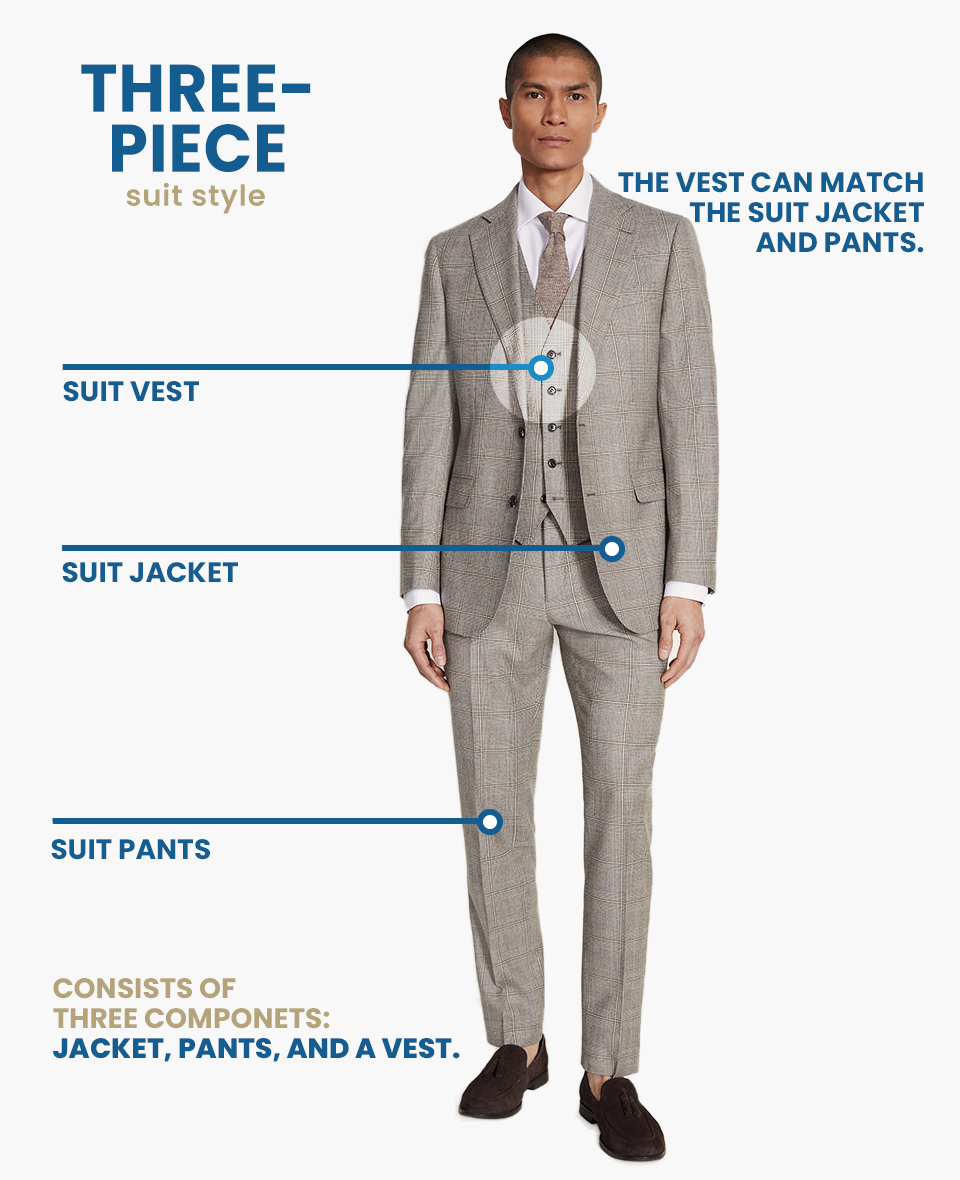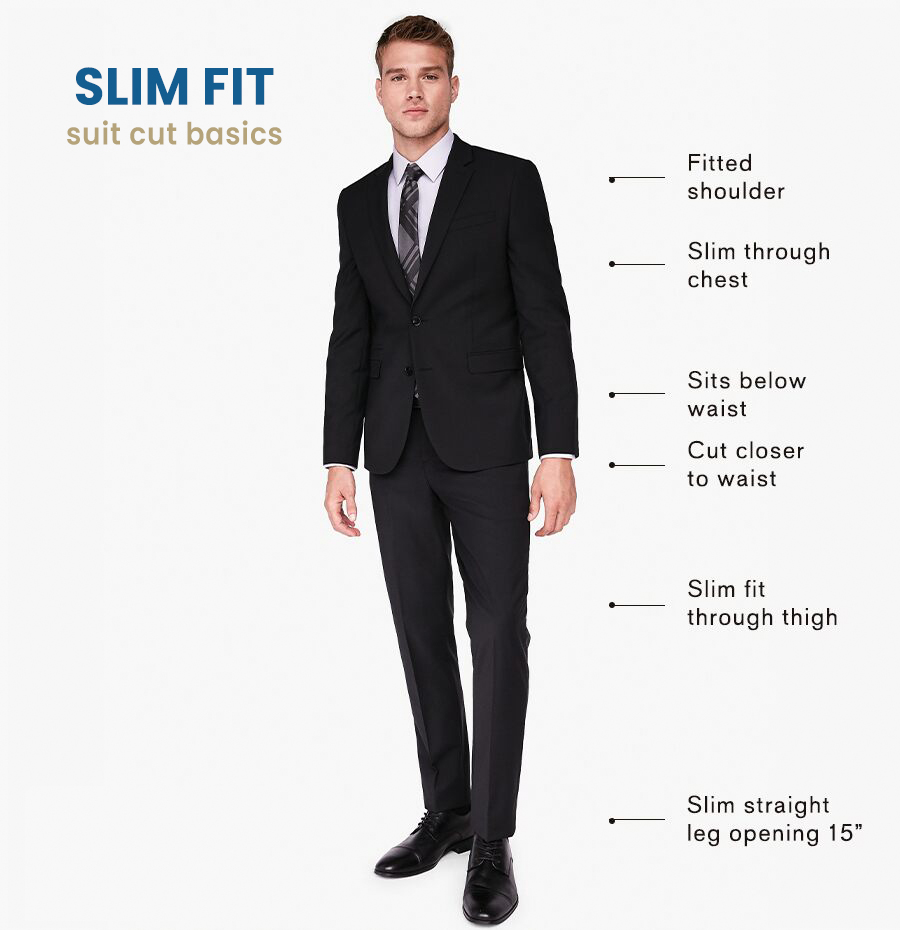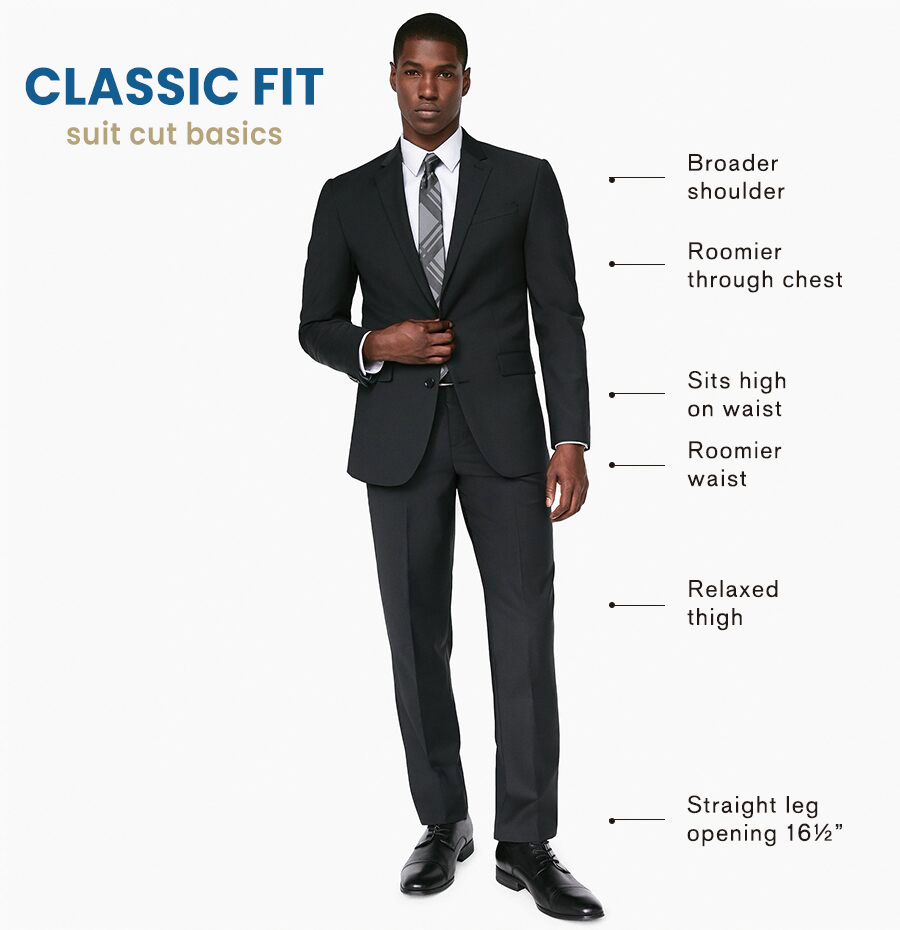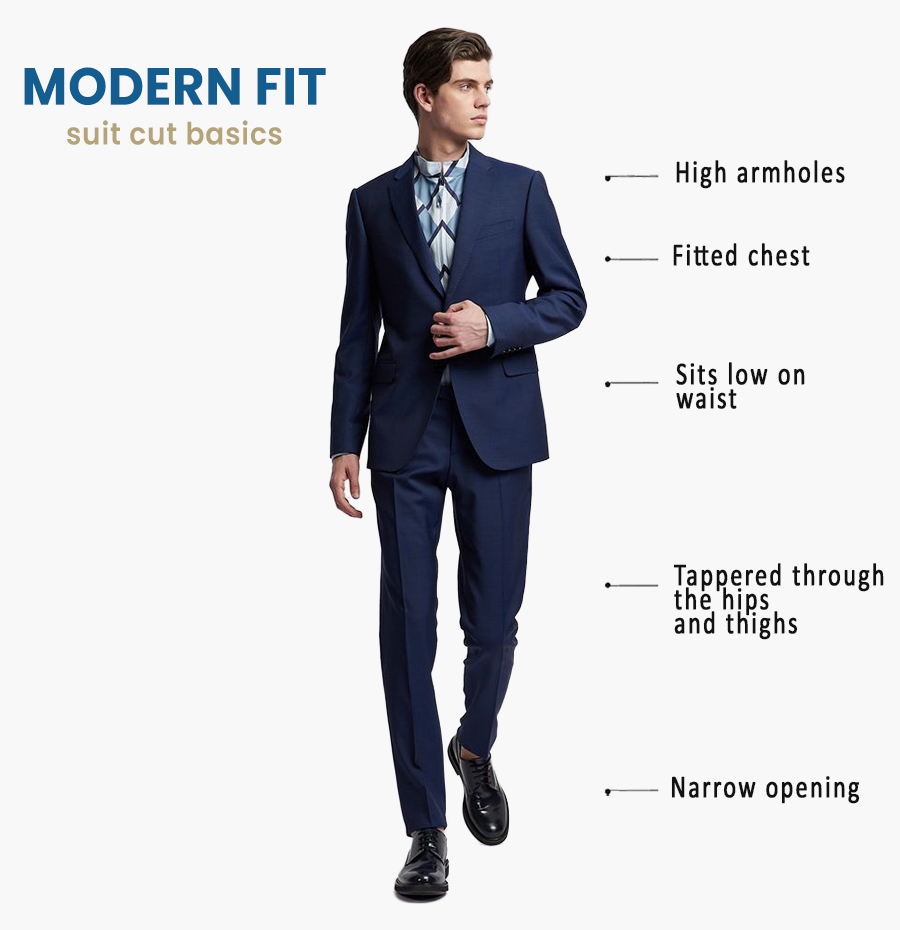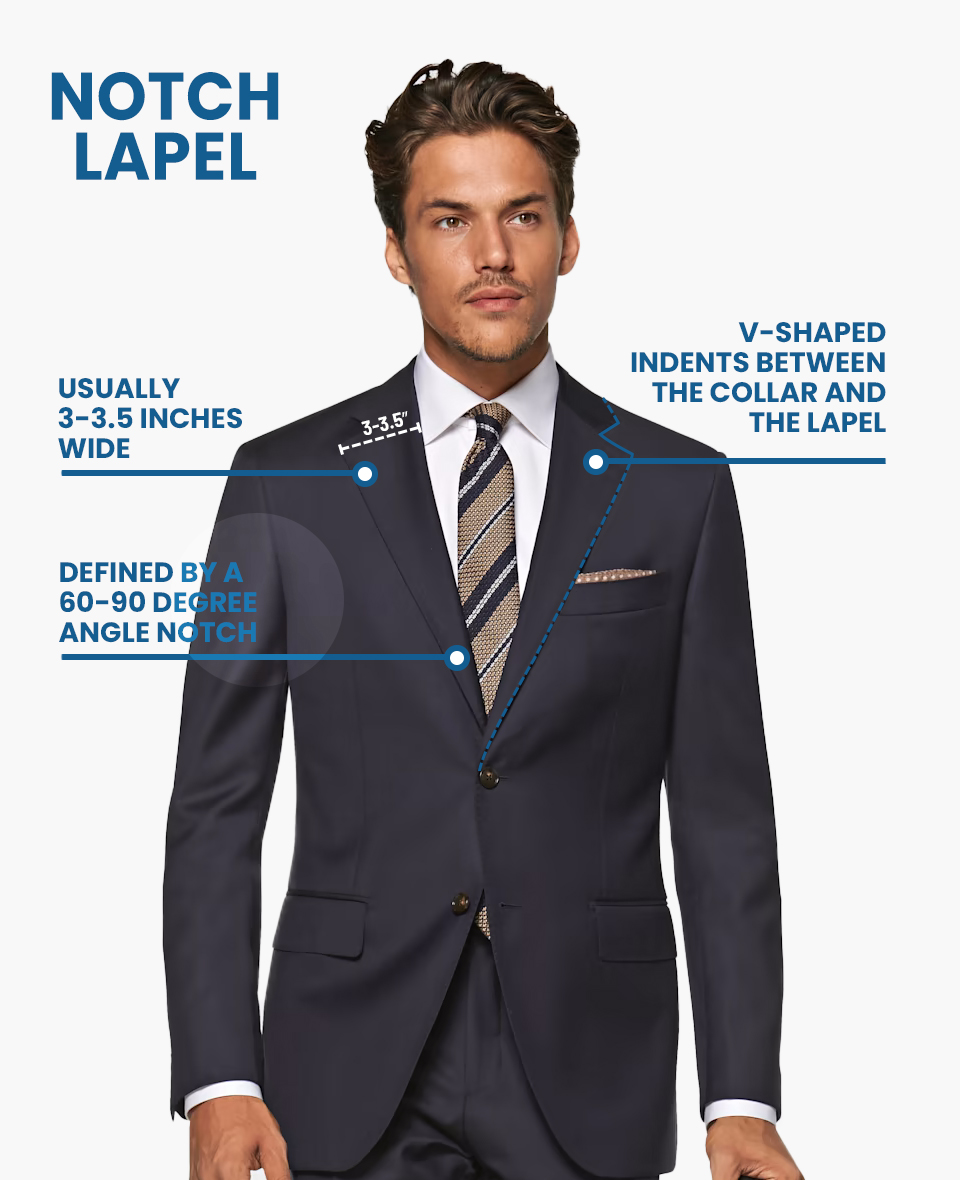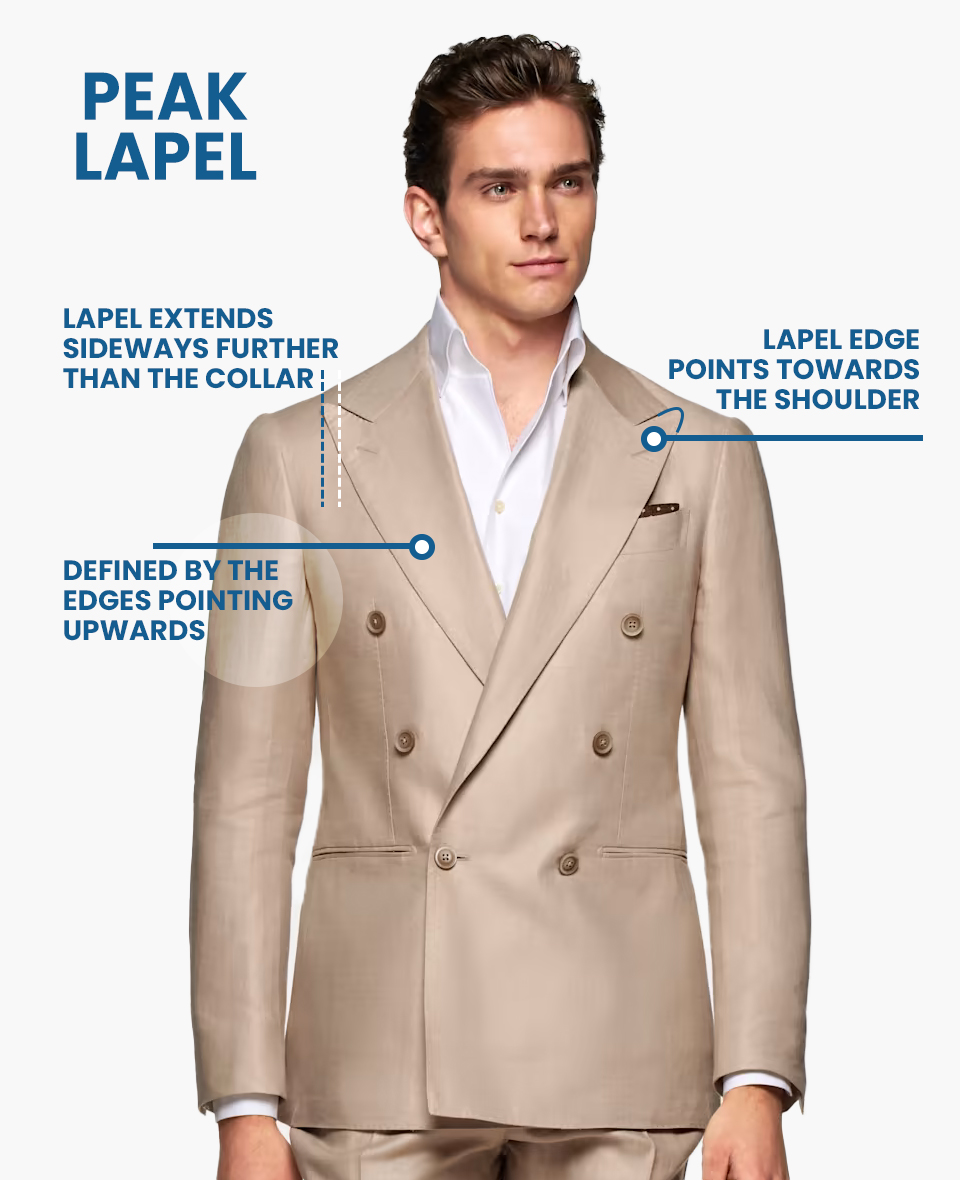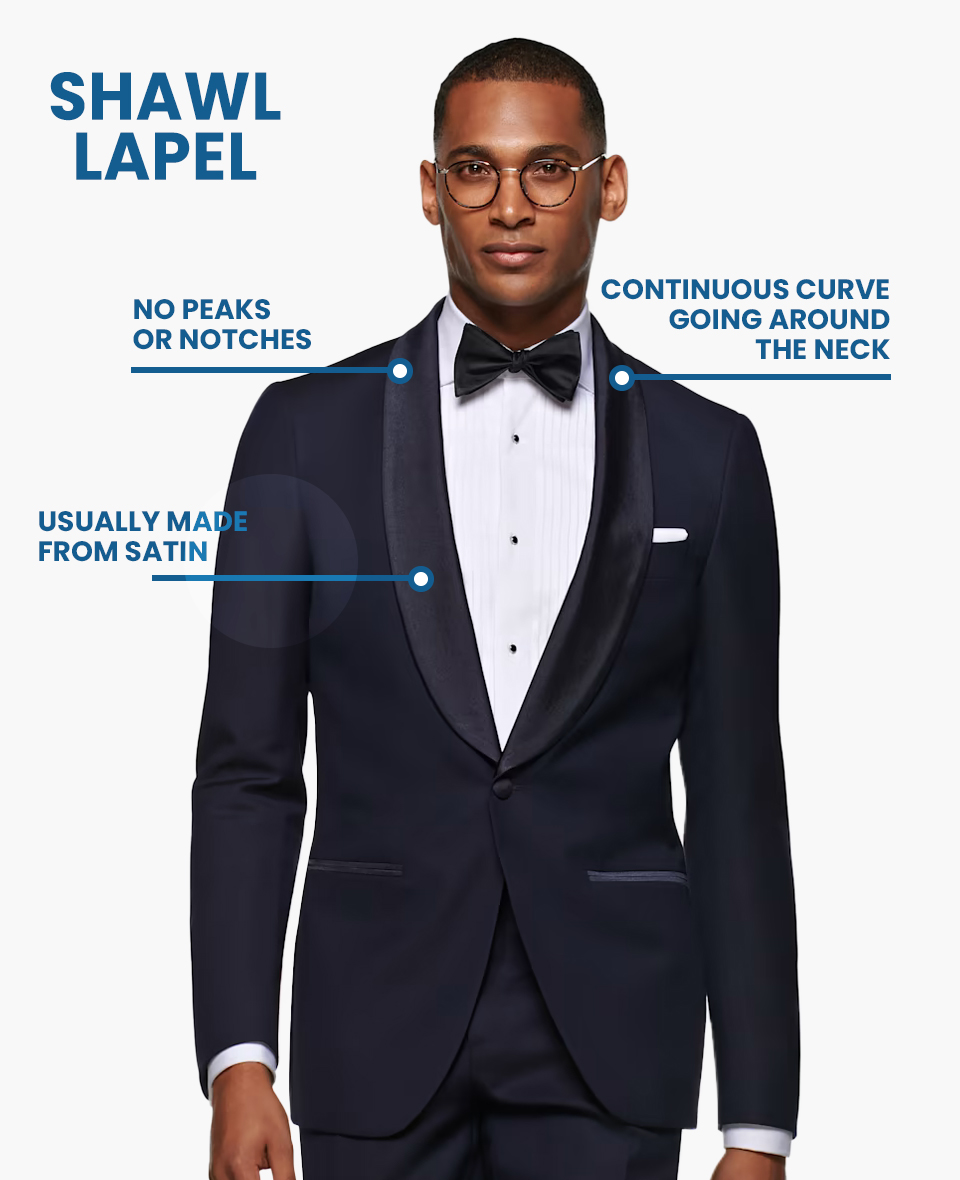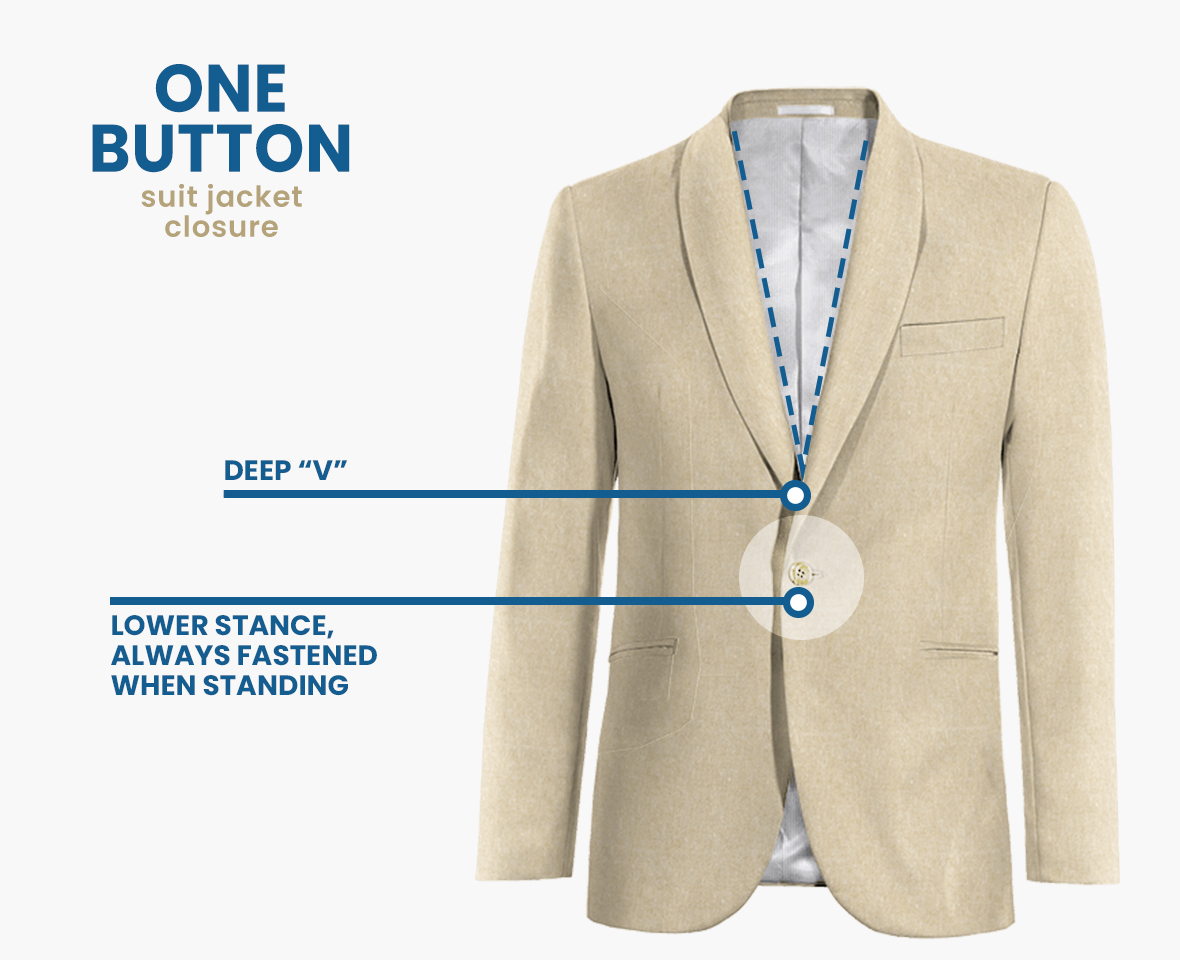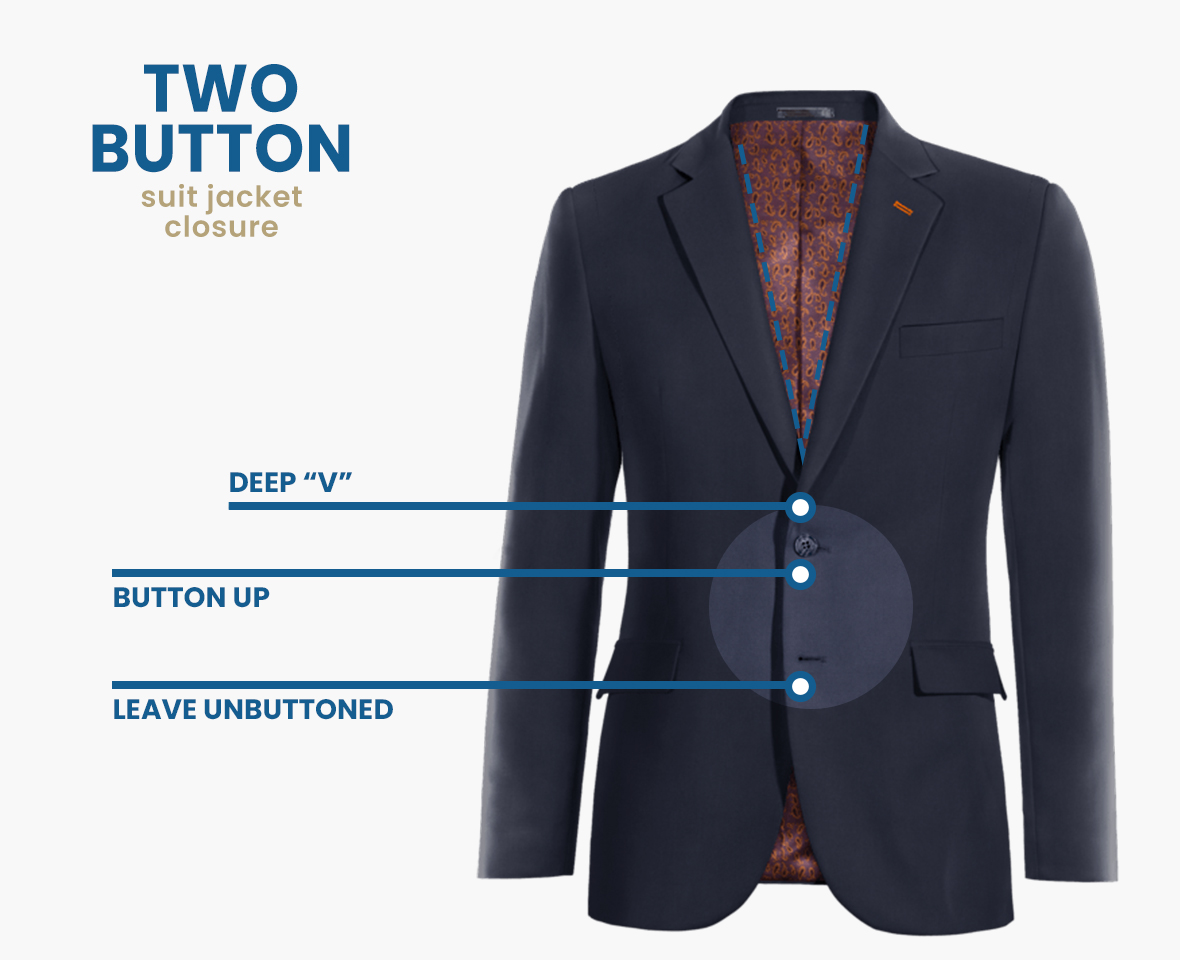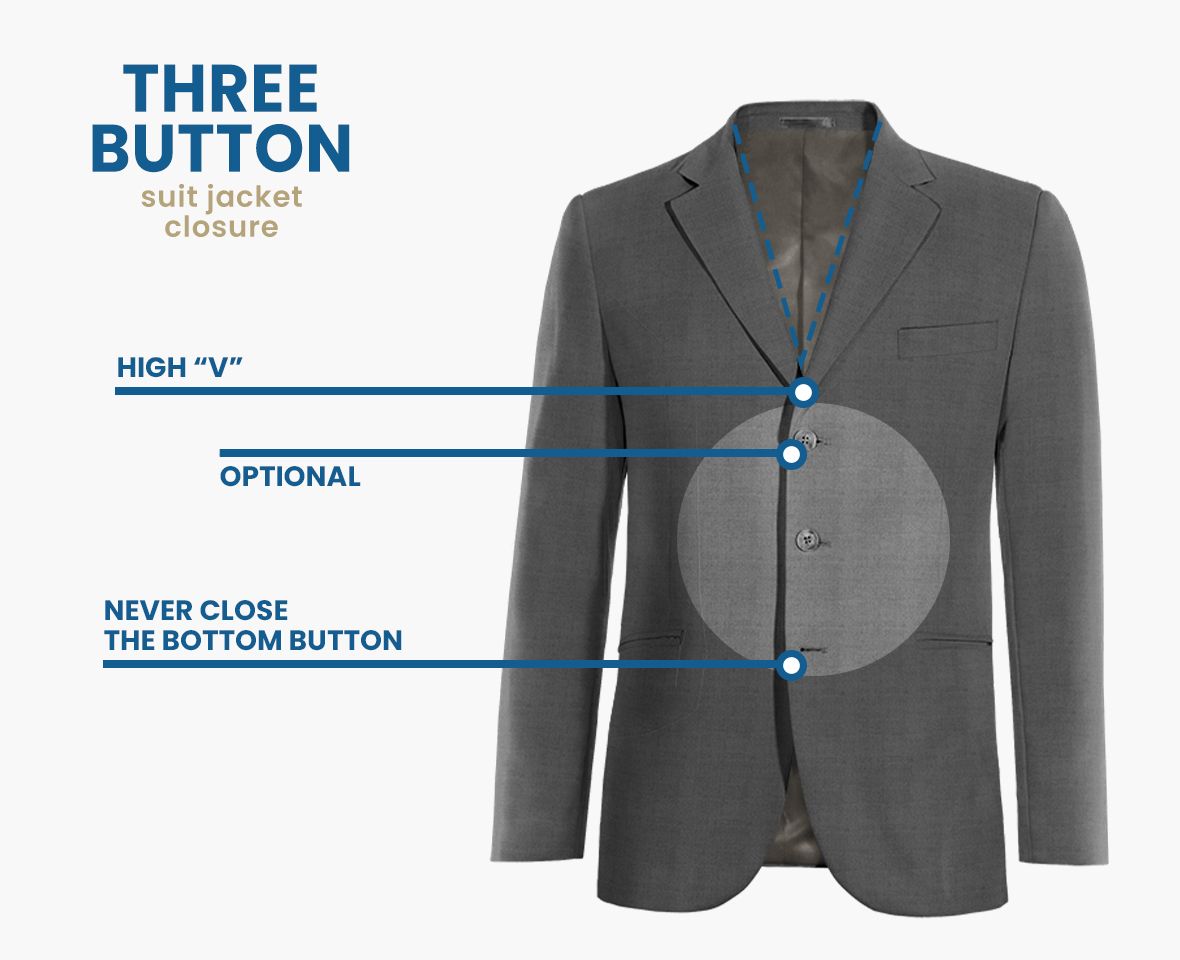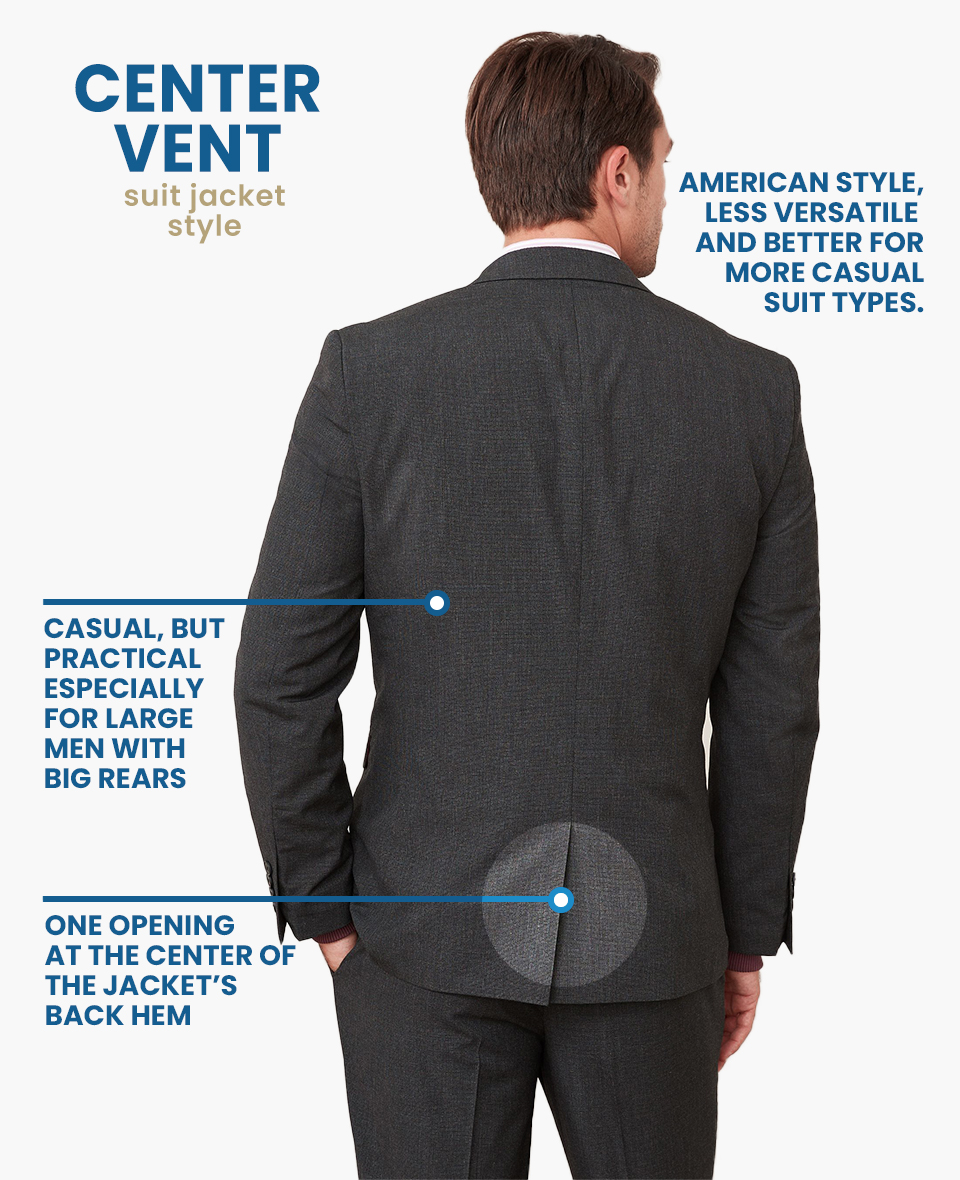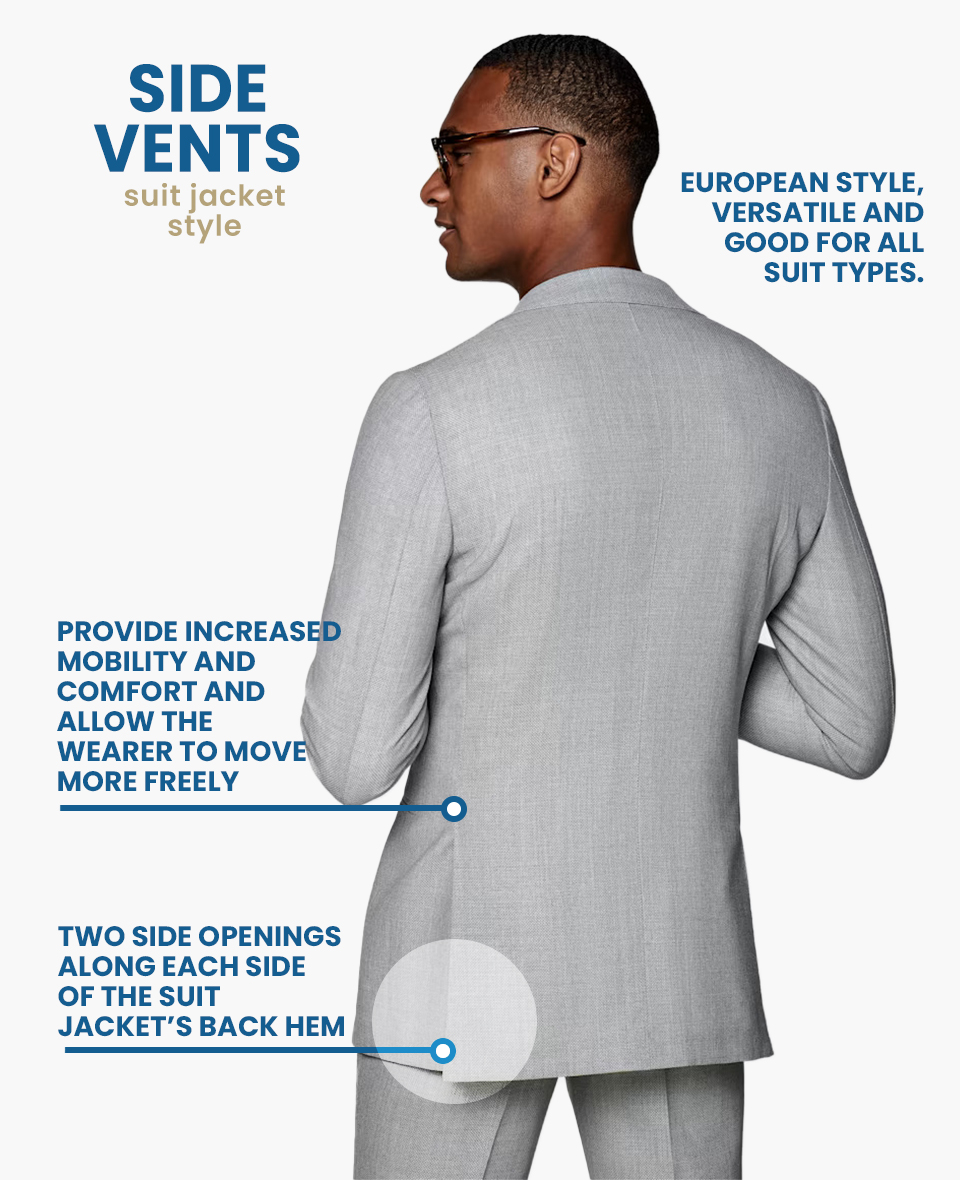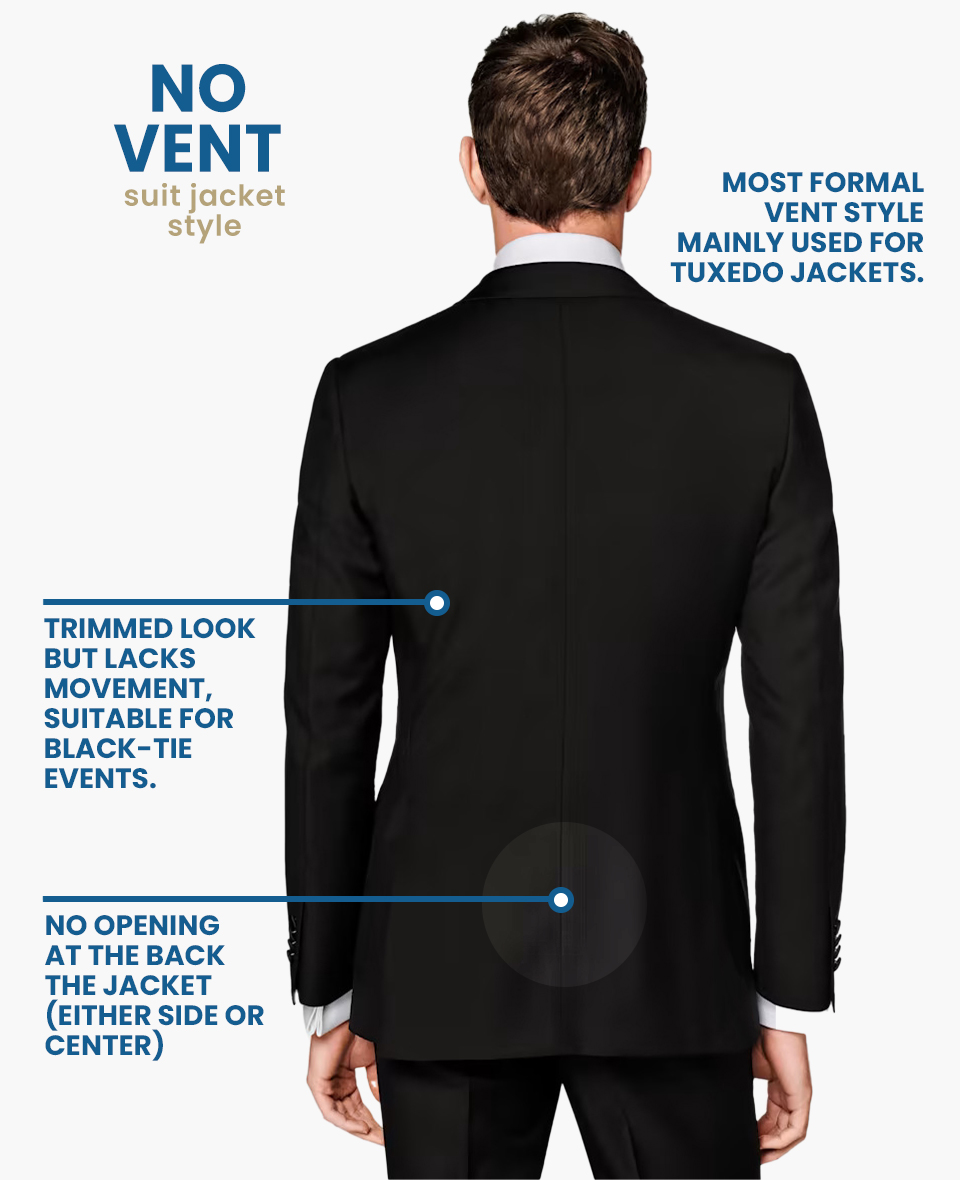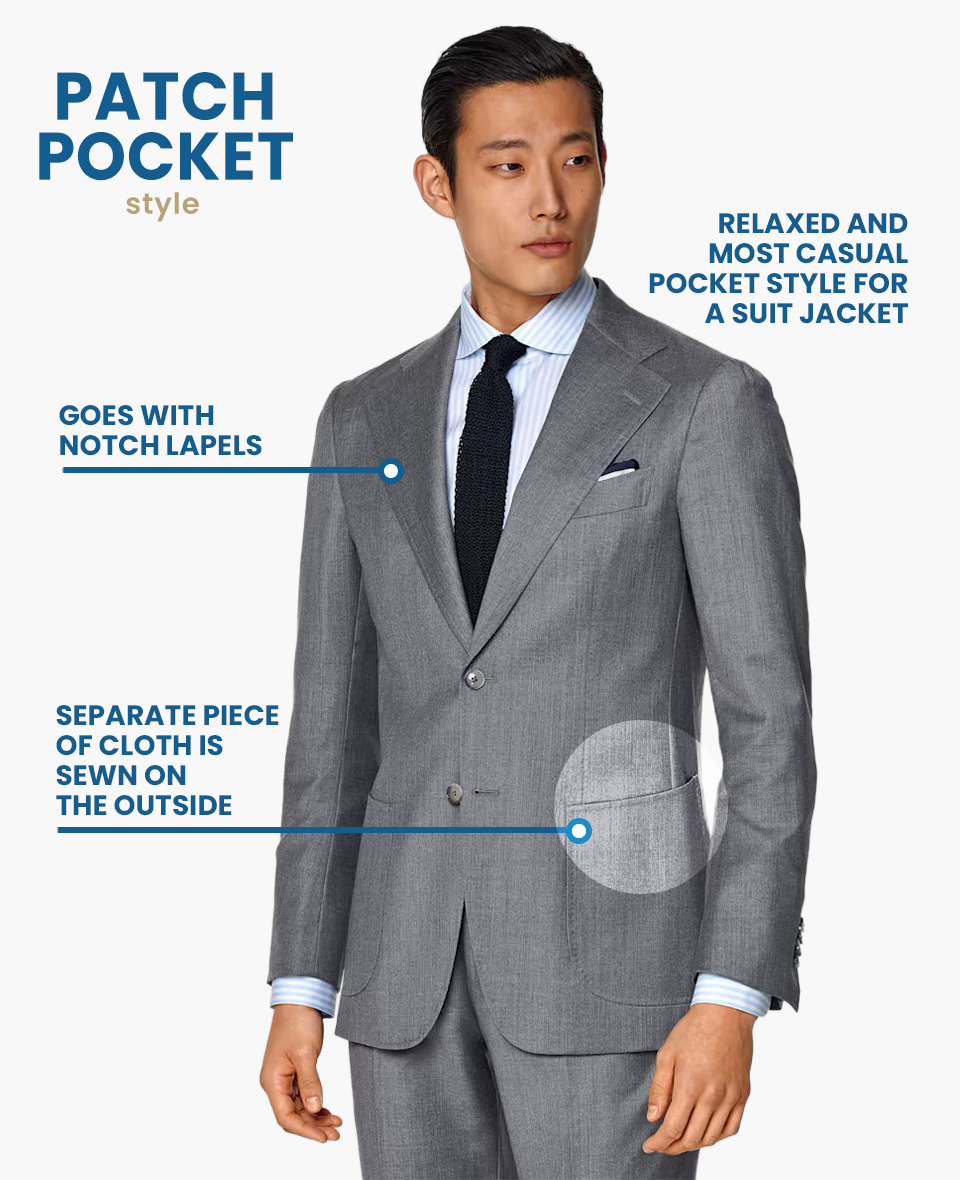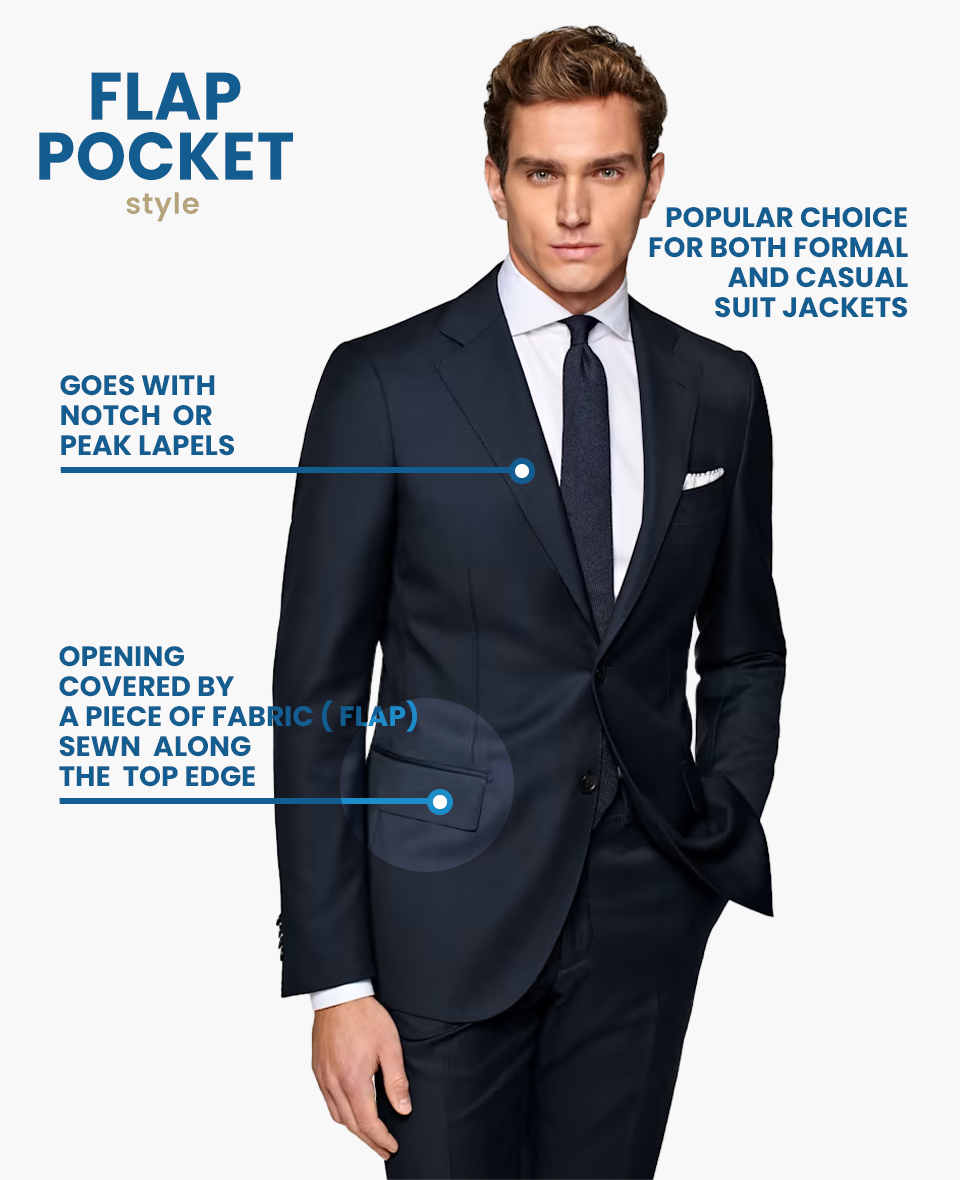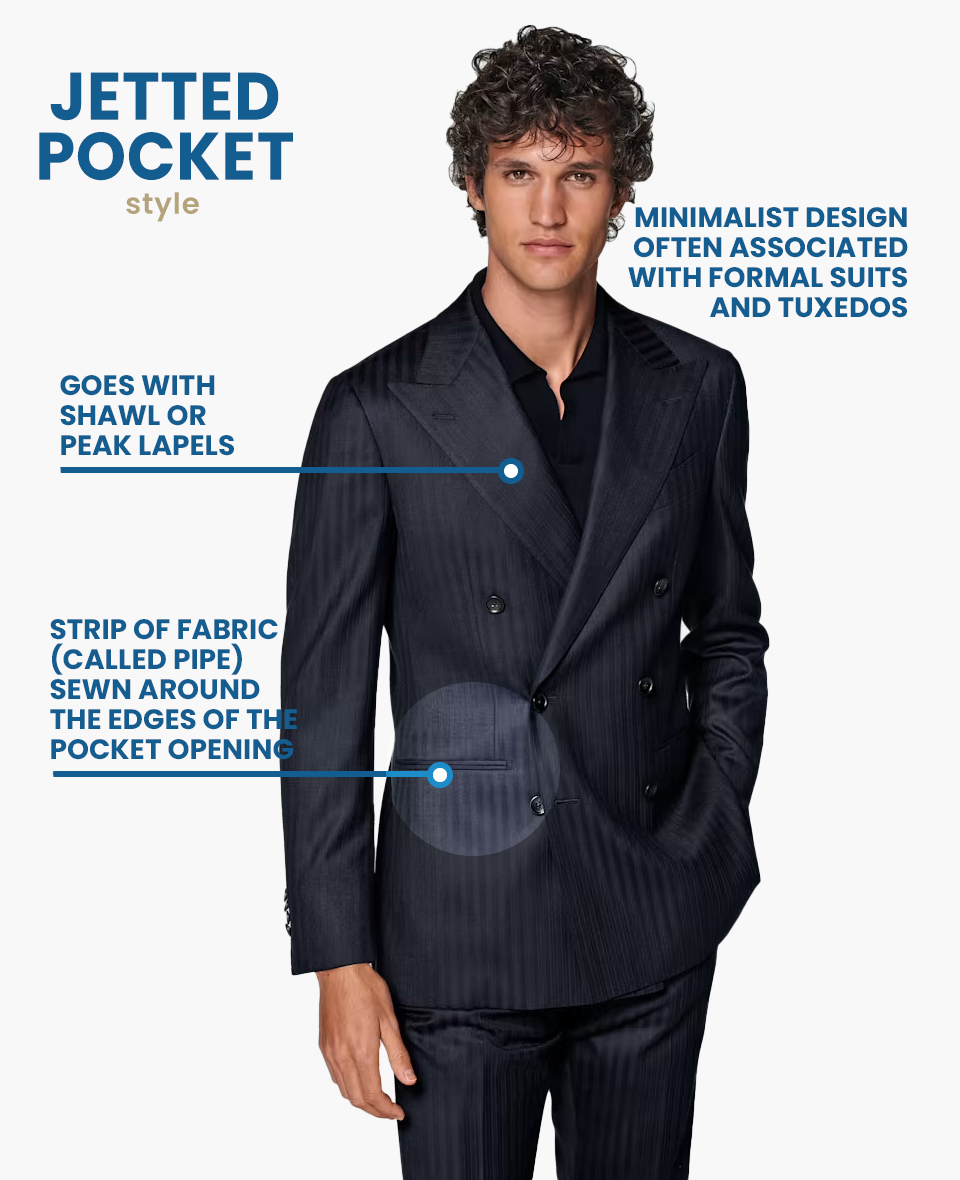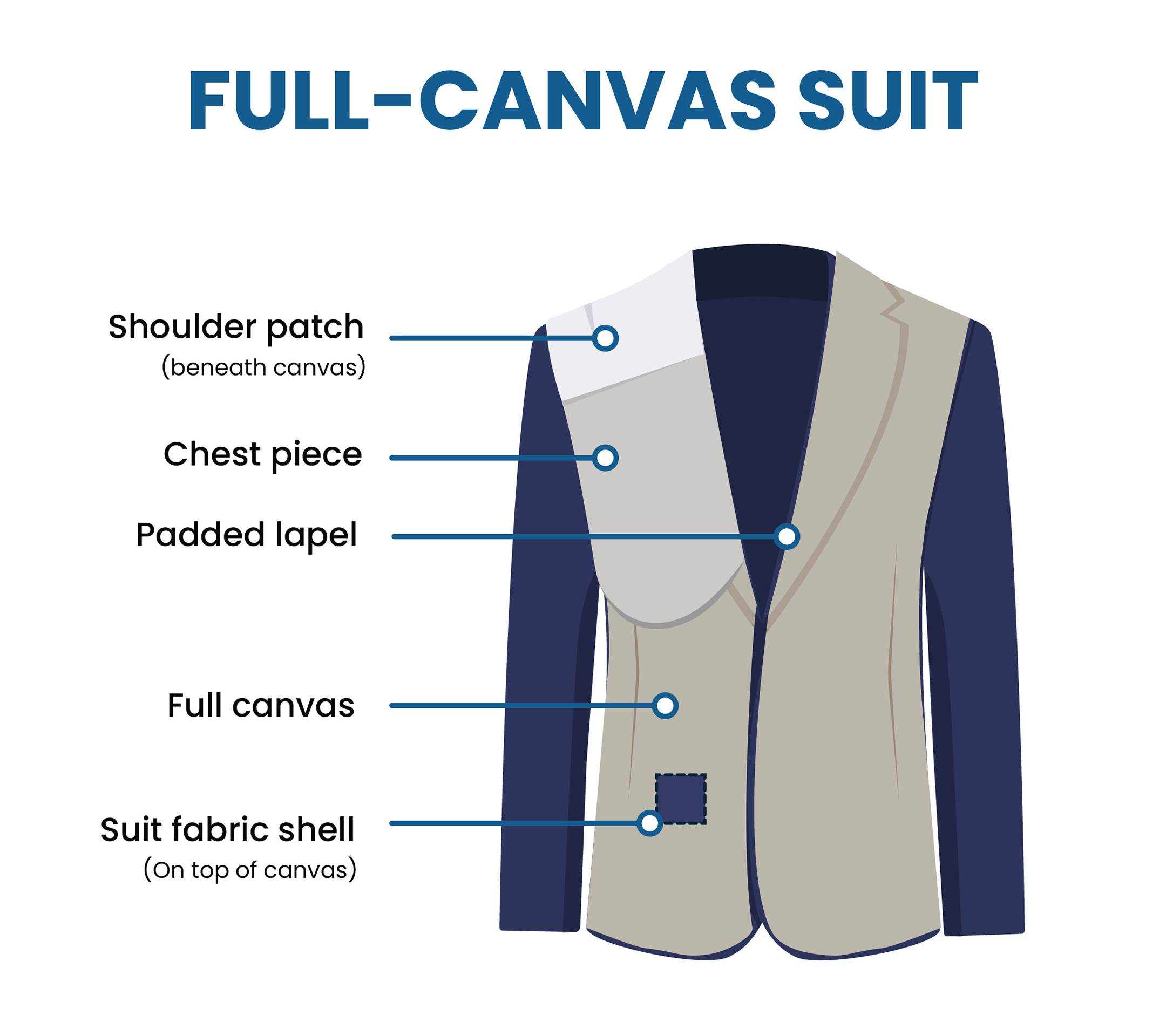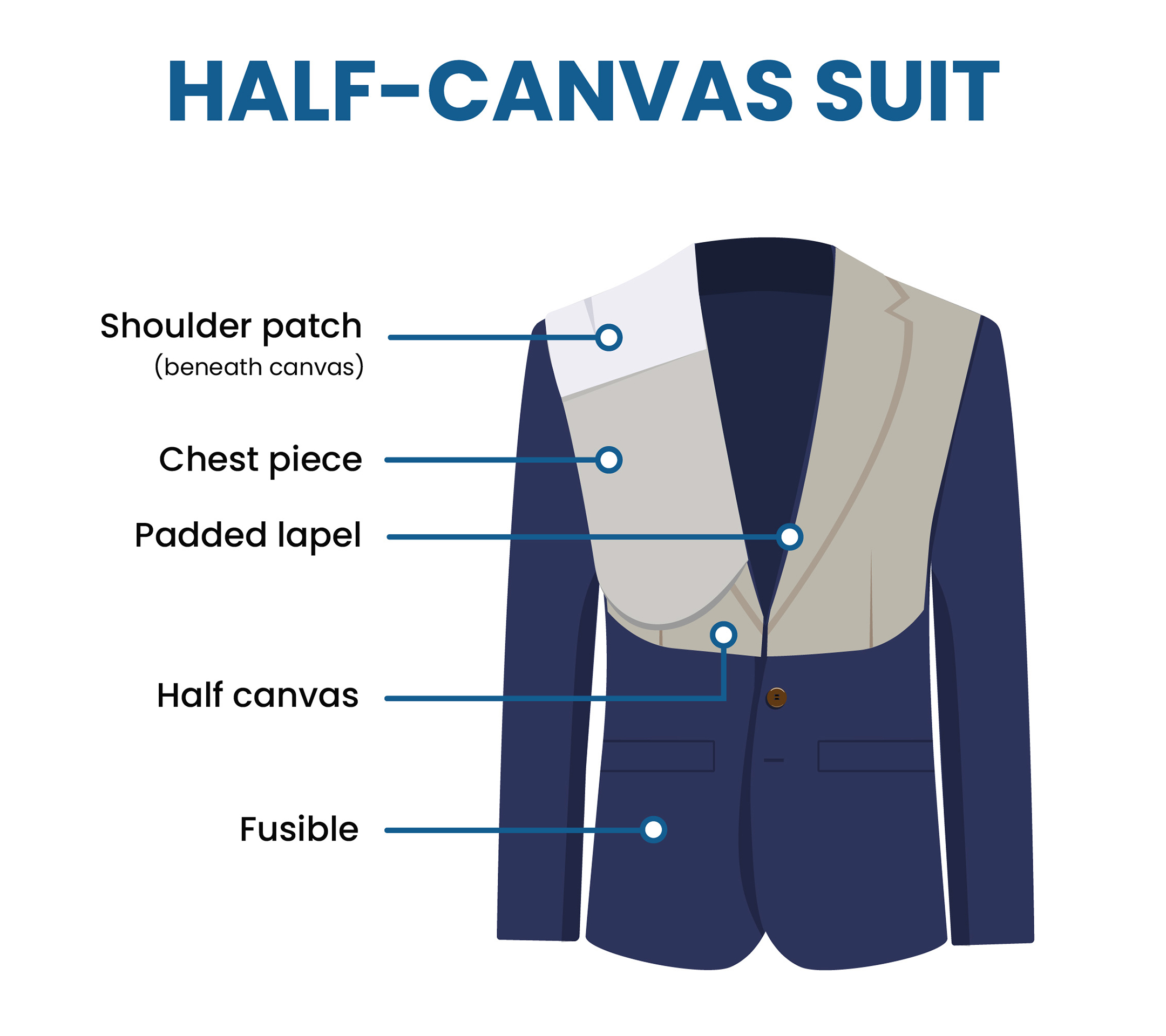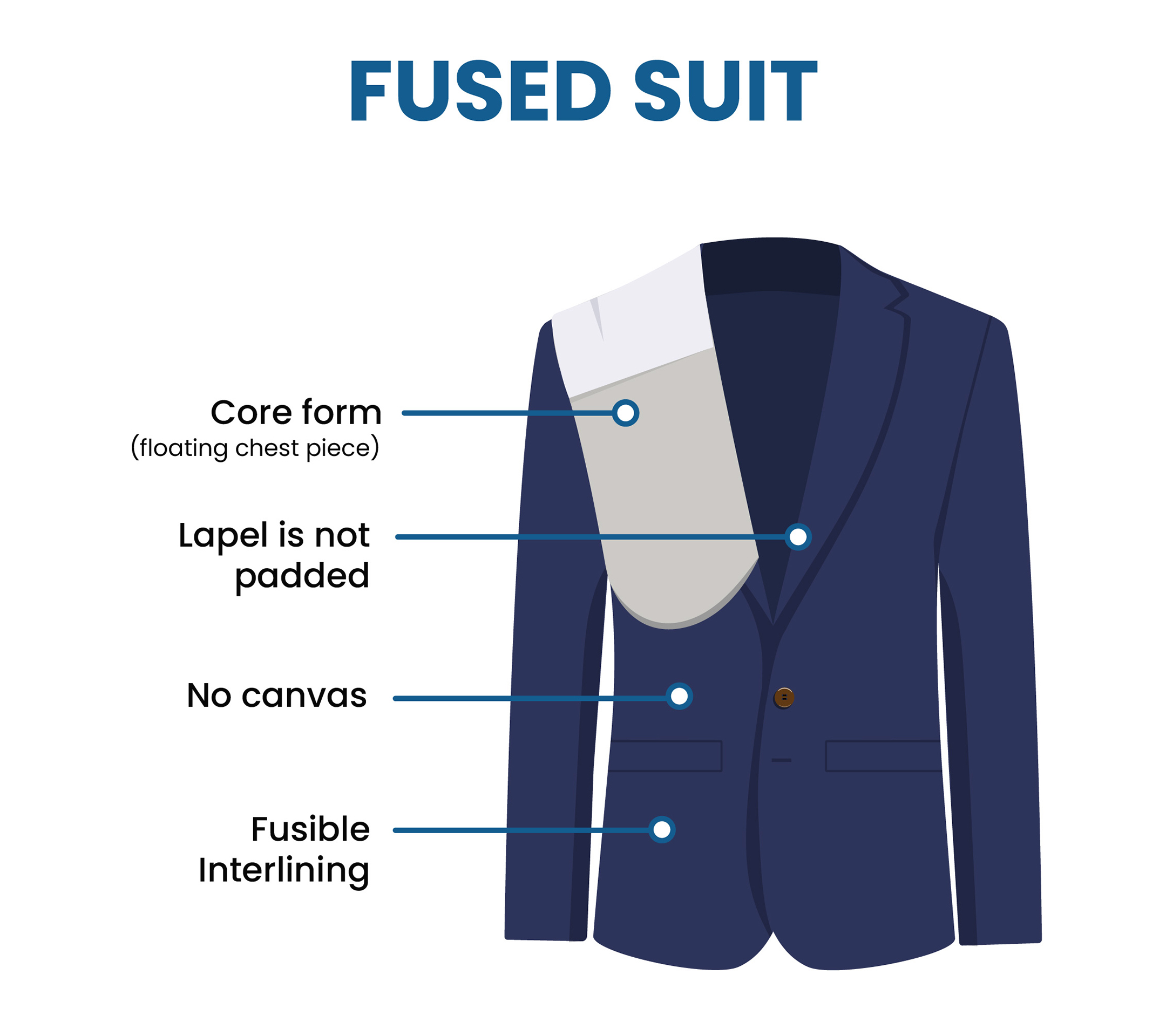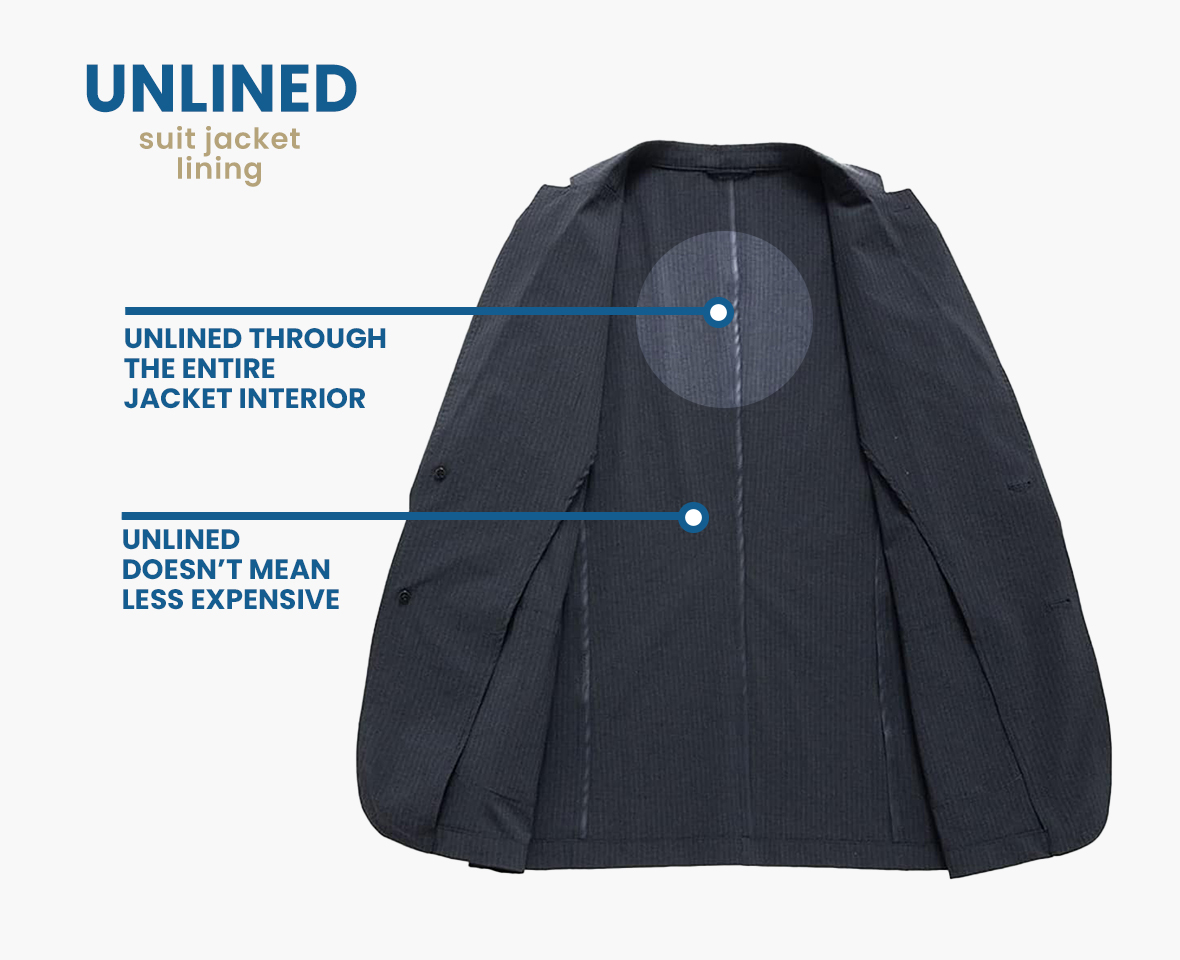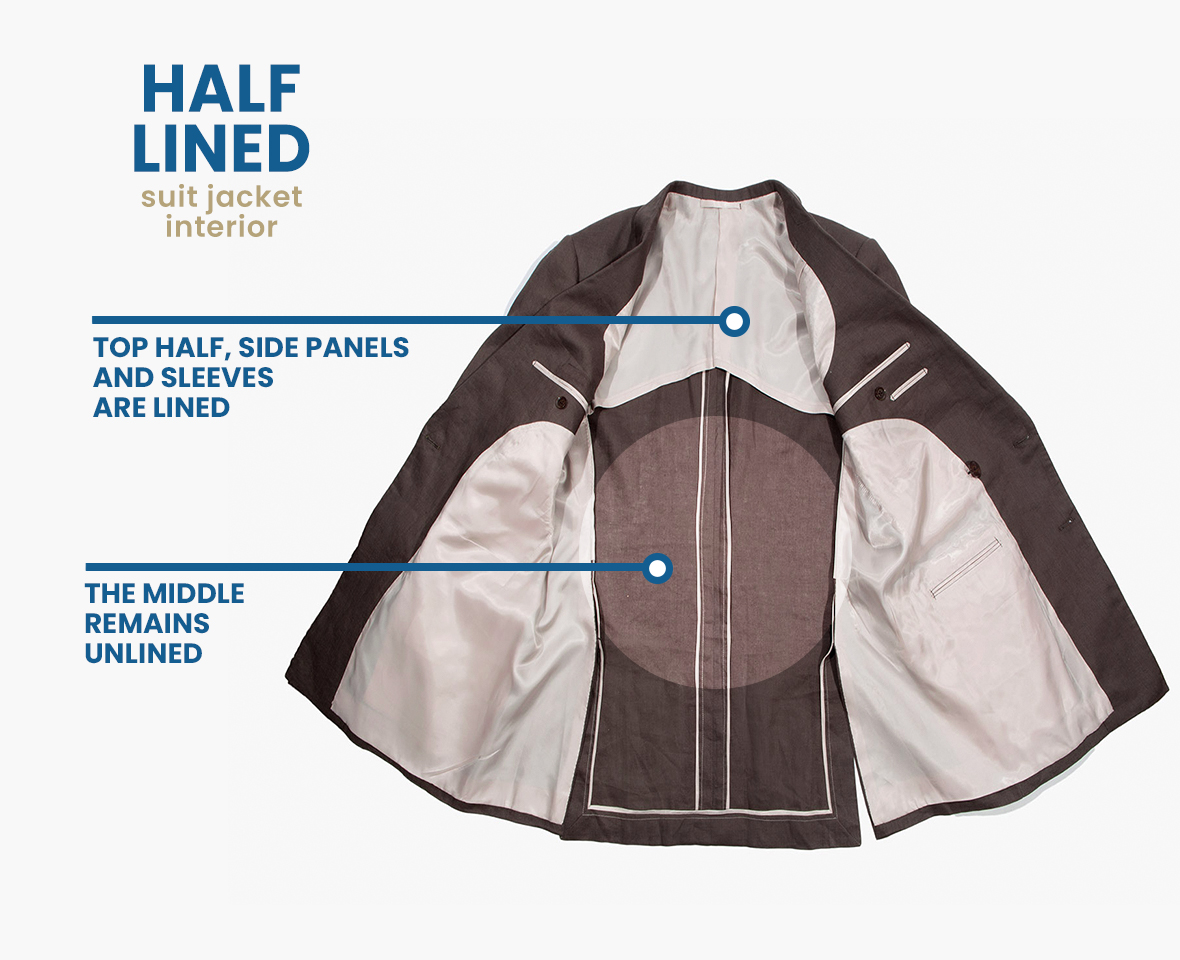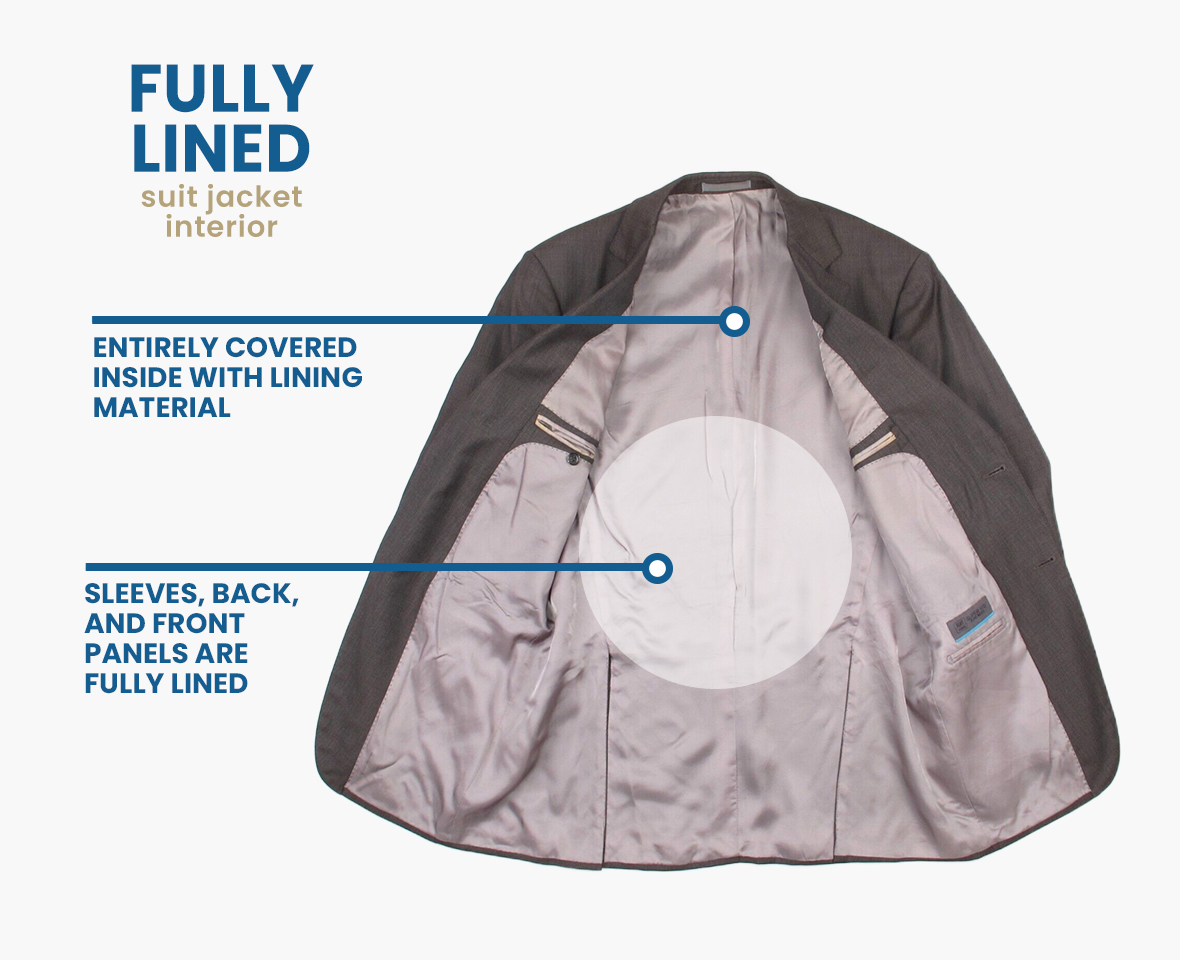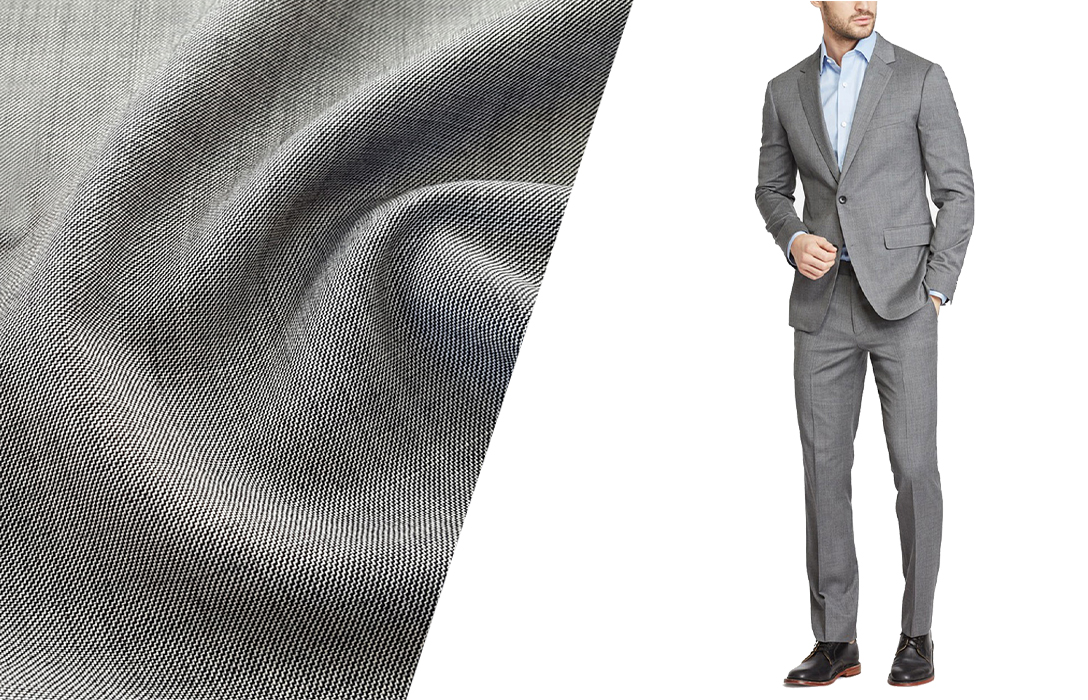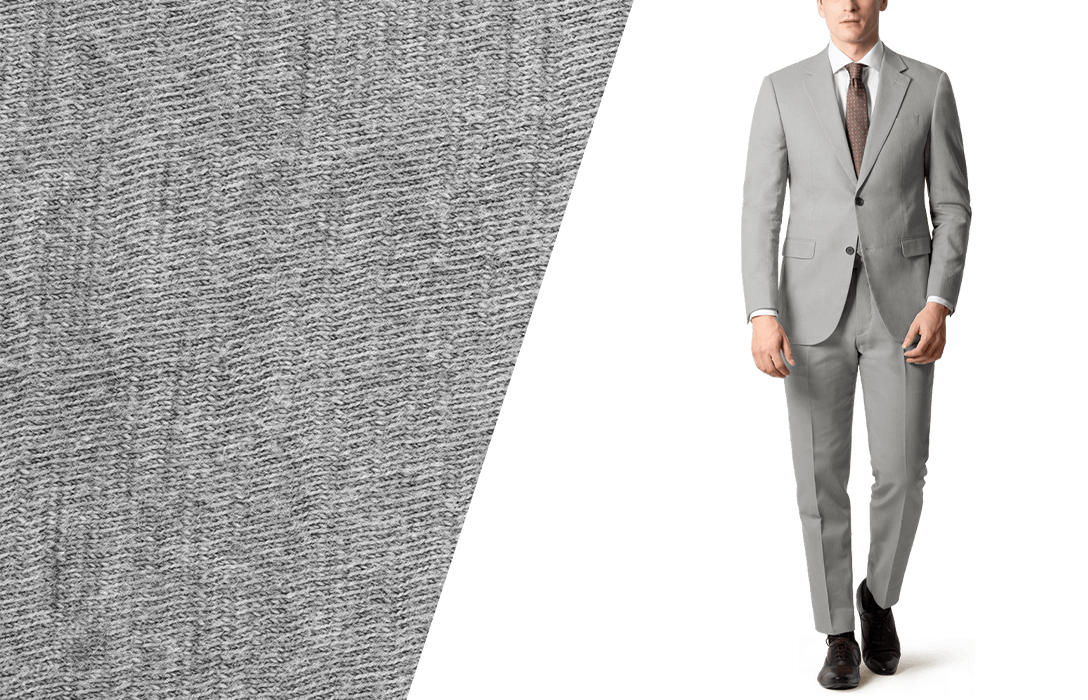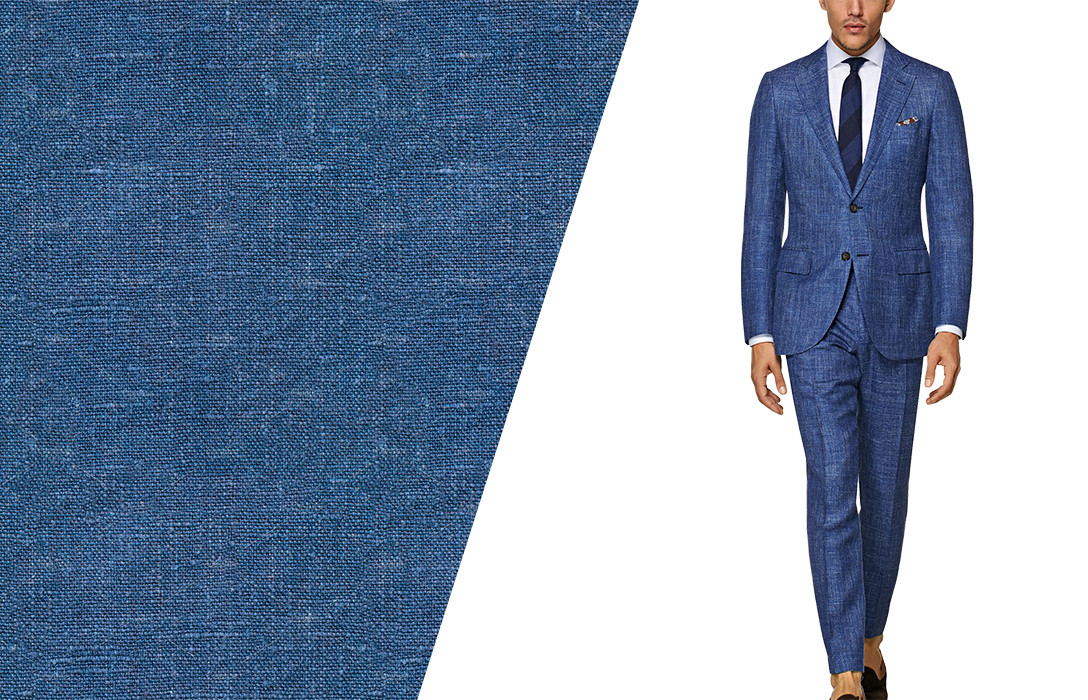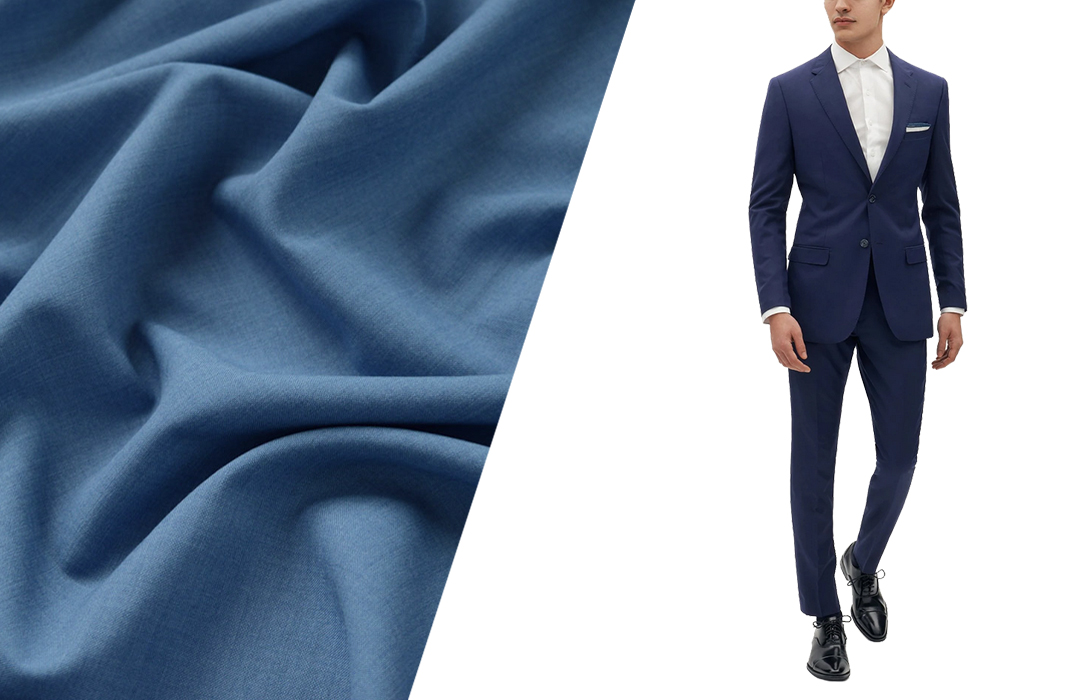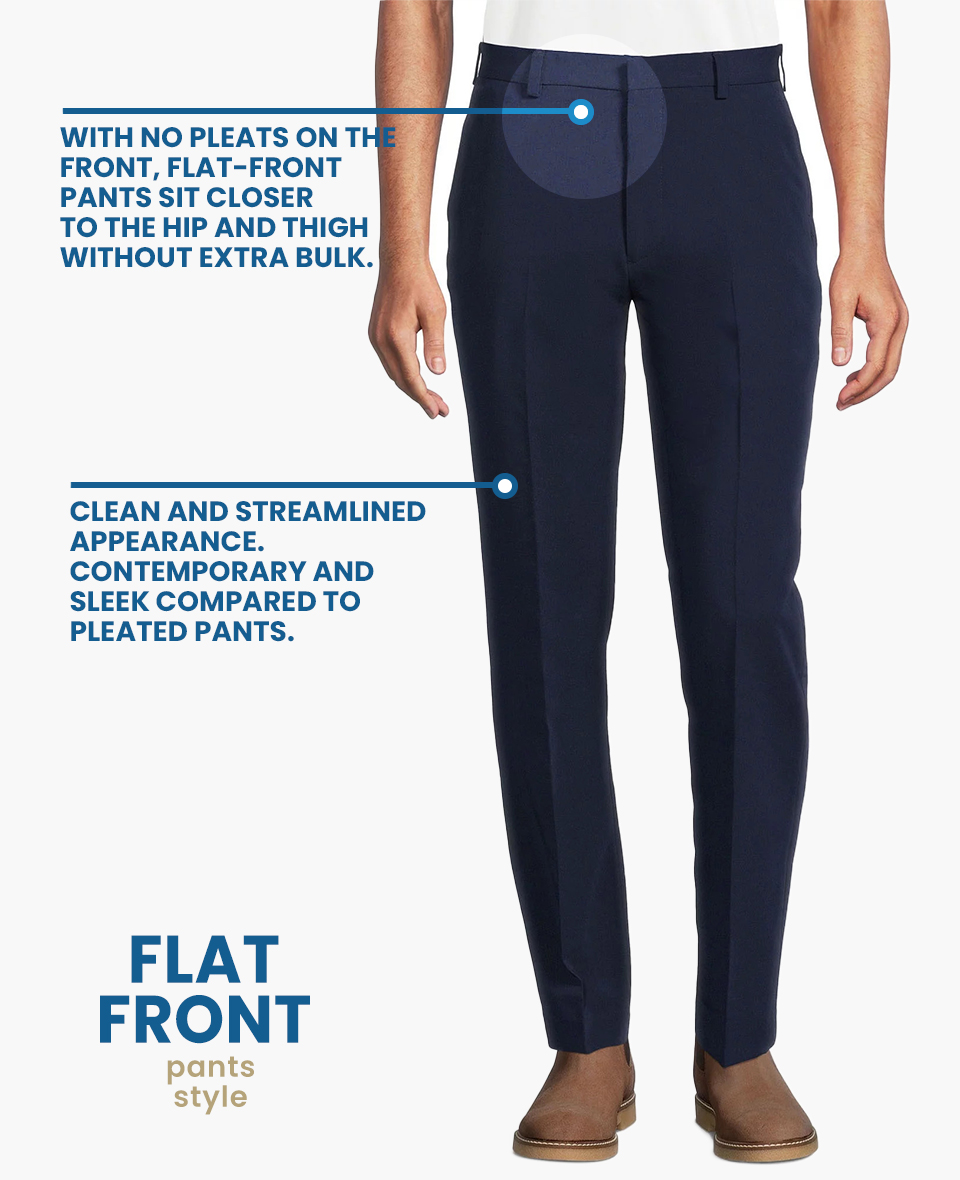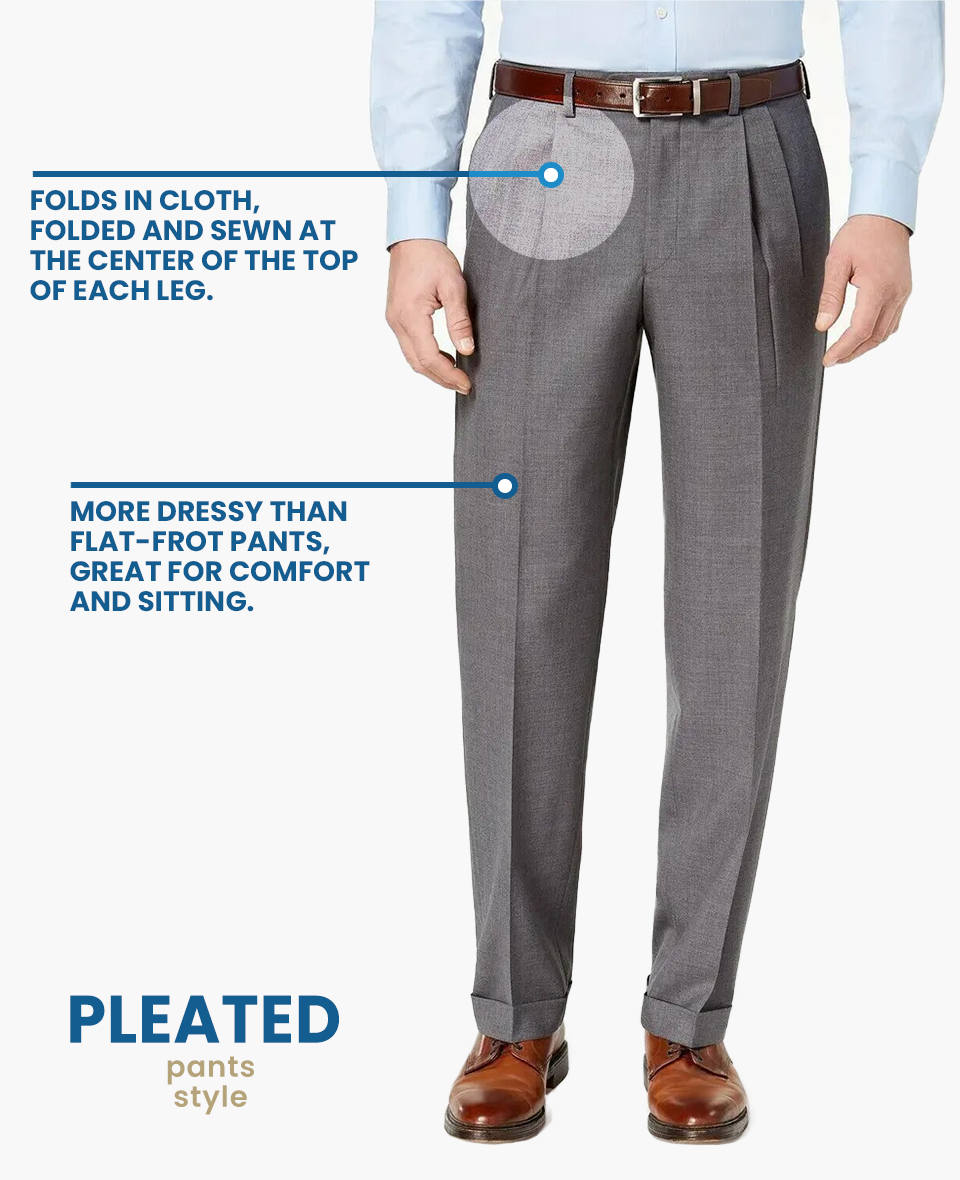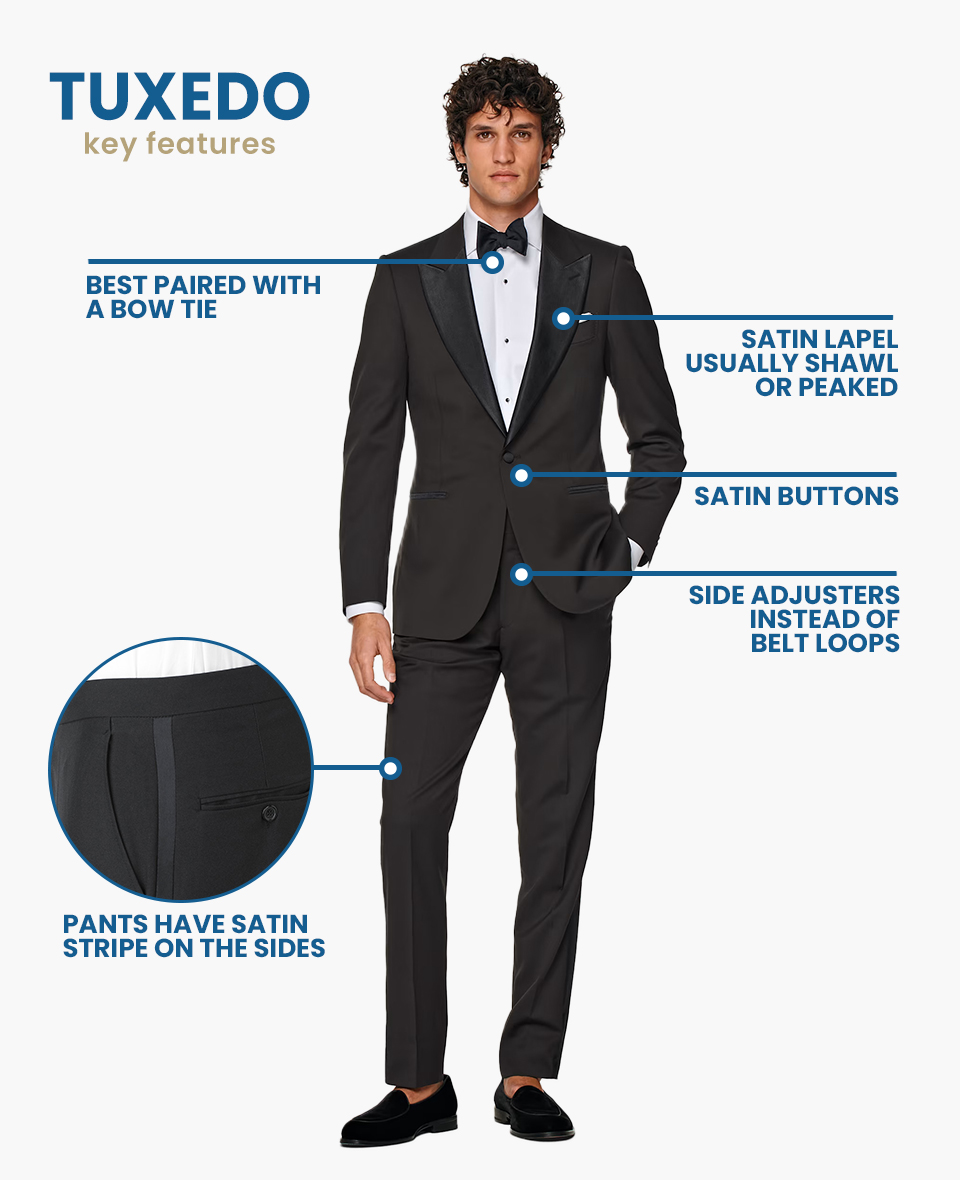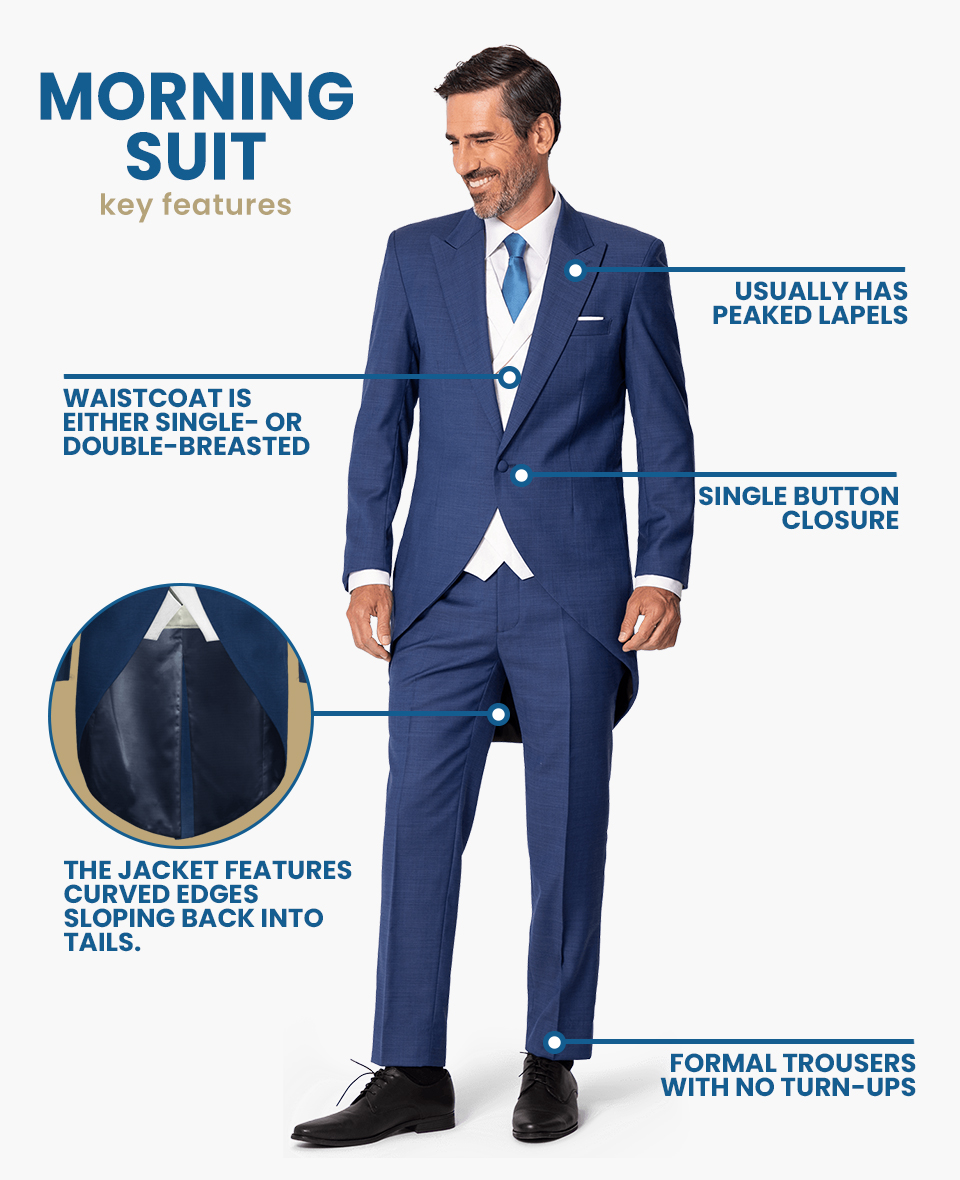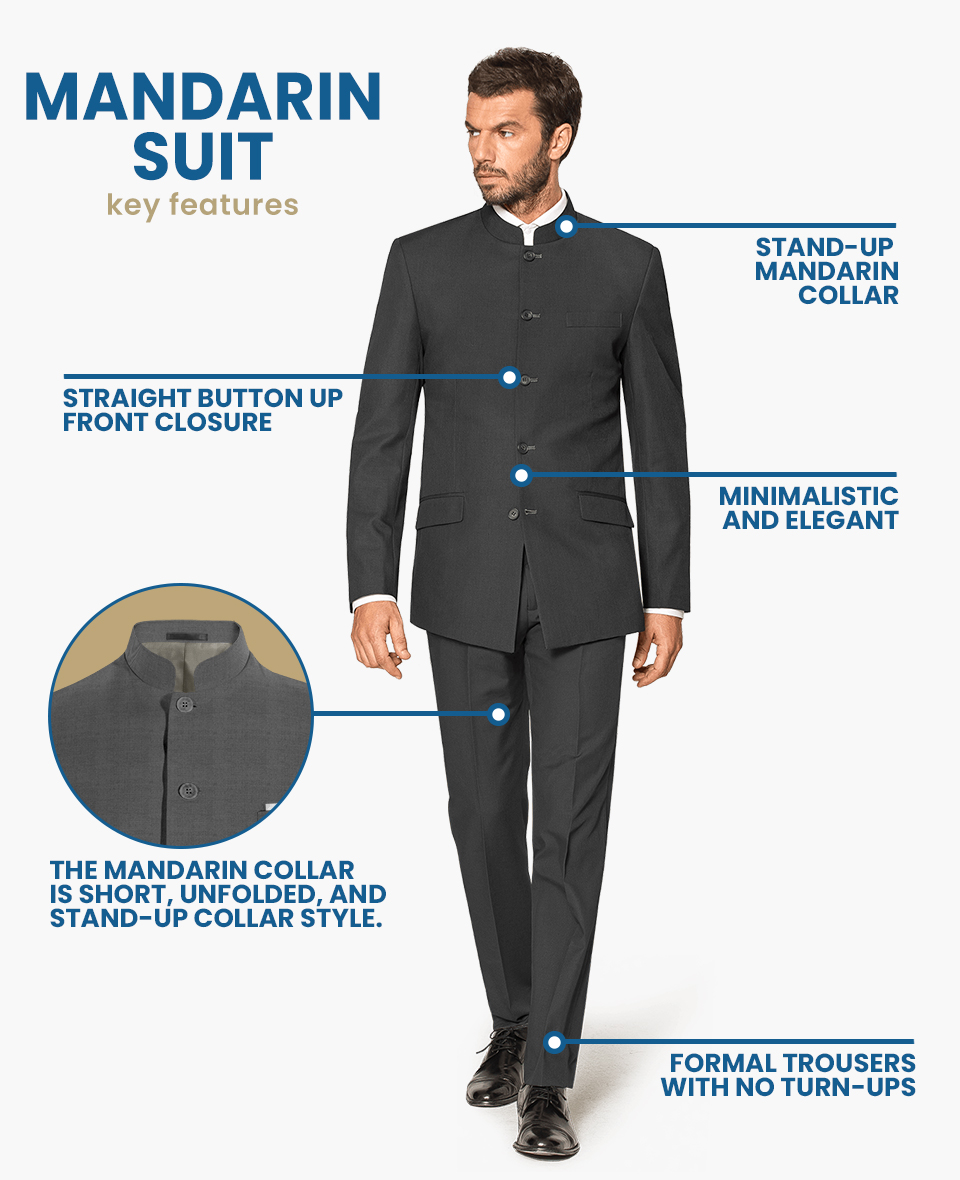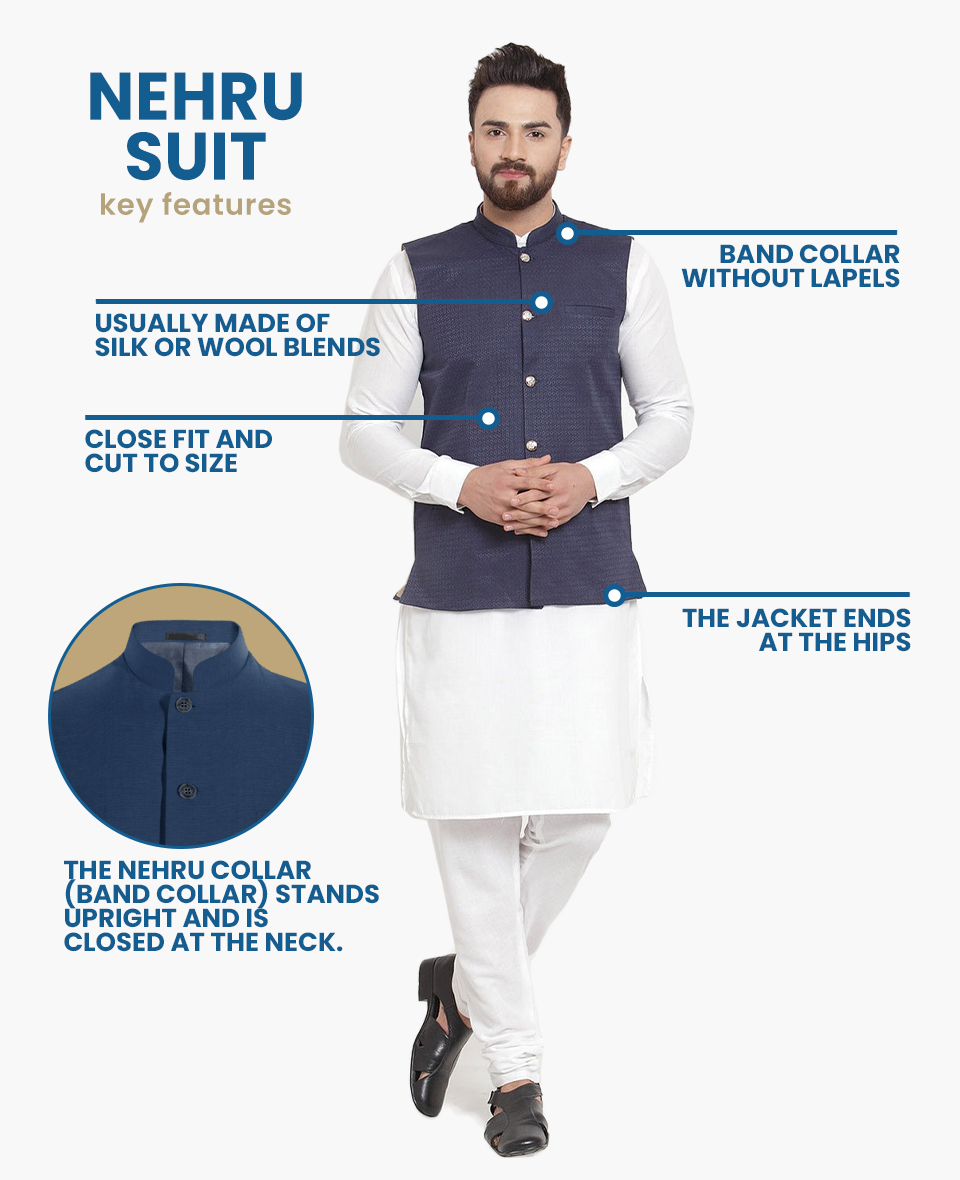With many different types of suits available, the suit stands as an undisputed style icon in traditional menswear.
Each with its unique character and flair, the world of suits is as diverse as it is elegant.
So whether you’re dressing for a business meeting, a formal event, or a casual outing, there’s a suit style just for the occasion.
Suit Jacket Closure Types
Design-wise, suits are classified as single- or double-breasted, distinguished by one or two rows of buttons on the front of the jacket respectively.
1. Single-Breasted Suit
The single-breasted suit features a straightforward design with a single row of buttons and a narrow overlap of fabric.
Typically, it comes with two buttons. Still, there are variations with up to three buttons in a single row.
The golden rule of buttoning is to always leave the bottom button undone if your suit jacket has more than one button. Notably, the fewer buttons on the jacket, the more casual the suit appears.
These suits flatter a wide range of body types and various occasions.
2. Double-Breasted Suit
The double-breasted suit offers a dressier option and stands out with two parallel rows of buttons.
Generally, there are 4, 6, or 8-button configurations, although six buttons are the most common.
These types of suits are particularly effective for a slimming effect, as they accentuate the shoulders and elongate the wearer’s silhouette.
They’re ideal for formal occasions or for those seeking a commanding presence.
Types of Suit Sets
Suit sets vary by configuration and typically include two-piece suits with a jacket and trousers and three-piece suits which also incorporate a suit vest.
3. Two-Piece Suit
The two-piece suit set comprises a matching jacket and trousers from the same fabric.
It is the most versatile and commonly worn suit style, suitable for various events, from business meetings to weddings.
The two-piece suit is the foundation of a gentleman’s wardrobe, offering endless possibilities for customization in fabric, fit, and details.
4. Three-Piece Suit
The three-piece suit comes with an addition of a suit vest alongside the traditional jacket and trousers.
This suit style elevates the formality of an ensemble, making it an excellent choice for more formal business environments or special events.
The vest (aka waistcoat) can also be mixed and matched with different types of suits, adding versatility to one’s wardrobe.
Types of Suit Cuts
Different suit cuts vary in their construction, leading to distinct fits that uniquely conform to the wearer’s body.
5. Slim-Fit Suit
The slim-fit suit is tailored to closely follow the body’s contours, offering a modern and youthful look.
The suit is slim through the chest and shoulders, cut closer to the waist, and slim through the thigh and legs.
The slim-fit suit is famous among younger gentlemen and those who prefer a contemporary, sleek appearance.
It is especially suited for those with a slender build, as it accentuates the body’s natural lines without being overly restrictive.
6. Classic-Fit Suit
The classic-fit or regular-fit suit is known for ample room through the chest and waist, making it an ideal choice for various body types.
It provides a more relaxed fit compared to contemporary styles.
The jacket is designed to be comfortable, extending gracefully to the hips. Accompanying pants feature a looser fit with a straight-leg opening.
7. Modern-Fit Suit
The modern-fit suit strikes a perfect balance between slim and classic fits. It is tailored to be slightly tapered, offering a stylish and comfortable silhouette.
This fit is ideal for those seeking a fashion-forward yet practical suit, again suitable for a wide range of body types.
Types of Suit Lapels
The collar of a suit jacket, also known as a lapel, can have different shapes and styles. These are the three most common suit lapel types:
8. Notch Lapel Suit
The notch lapel suit is defined by the small indent, a 60-90 degree angle “notch” where the lapel meets the collar.
The notch lapel offers a blend of simplicity and elegance, making it a favored choice for most men.
In addition, this style is suitable for various occasions, from business to casual, and is a staple in most suit types.
9. Peak Lapel Suit
The peak lapel suit features lapels with edges that point upwards towards the shoulders, offering a bolder and more formal aesthetic.
Traditionally associated with double-breasted suits, this style adds a touch of sophistication and is often chosen for formal events.
It is particularly well-suited for individuals with rounder facial shapes.
10. Shawl Lapel Suit
The shawl lapel suit is characterized by a continuous curved lapel without a break or notch.
Hence, it holds the throne as the most formal type of lapel.
Most commonly seen in tuxedos, this style is ideal for the most formal events, such as black-tie affairs.
Number of Suit Buttons
Suit jackets vary in button number, ranging from the minimalist one-button style, the standard two-button, and the traditional three-button, each representing different formalities and closure rules.
11. One-Button Closure Suit
The one-button closure suit features a single button on the jacket, offering a clean and contemporary look.
This style is particularly favored in tuxedo suits. But it is well-suited for casual and semi-formal events alike.
Also, the one-button jacket will show off your shirt and tie more, giving the impression that you are taller. That makes it especially great for shorter men.
12. Two-Button Closure Suit
The two-button is the most common suit with two strategically placed buttons on the jacket.
It’s also the most versatile suit jacket closure style since more than 80 percent of suits nowadays feature two-button closures.
It works well for most body types and is suitable for various occasions, from business to casual settings.
13. Three-Button Closure Suit
Taller and muscular individuals often favor the three-button jacket for its torso-elongating effect. The number of buttons results in a shallower V cut with shorter lapels.
While less common than one or two-button variants, the three-button suit is still a dignified and formal choice.
However, over the last decade, they are slowly disappearing from the fashion scene.
The buttoning rule for three-button suit jackets is to optionally button the top button, always button the middle button, but never button the bottom one. It’s a rule commonly known as sometimes, always, never.
Types of Suit Jacket Vents
The vent of the suit jacket is a vertical slit on the bottom back of your jacket.
There are three different types that significantly differ in style and function:
14. Single Vent Suit Jacket
The single-vent suit jacket, also known as the center vent, features a distinctive cut in the middle of the jacket’s back hem.
This style is particularly prevalent in the US and a staple of mid-20th-century fashion.
Ideal for those who prioritize comfort in their attire, the center vent allows for greater mobility, especially when placing hands in pockets.
Although the vent may slightly part to reveal a portion of your back, the jacket should largely remain closed. It’s likely a sign of an ill-fitting suit if it doesn’t.
15. Double Vent Suit Jacket
The double vent suit jacket is characterized by two slits at the sides, providing increased freedom of movement and a more tailored fit.
This style is rooted in European tailoring and is often associated with higher-end suits.
Double vents allow the jacket to drape naturally over the body, offering mobility, comfort, and a flattering fit.
16. Ventless Suit Jacket
The ventless suit jacket has an uninterrupted back with a clean silhouette.
This style is often seen in formalwear, particularly tuxedos and evening suits.
The ventless design may restrict movement slightly, but it compensates with a distinctive, polished appearance.
Types of Suit Pockets
Suit pockets come in different designs, each affecting the suit’s overall look and formality.
17. Patch Pocket Suit
The patched style is distinguished by its pockets sewn onto the jacket’s outside, made from the same material as the jacket.
Patch pockets are relaxed and most casual types for suits. They’re always accompanied by notch lapels.
Most commonly seen on sports coats, they provide a convenient space for small personal items.
18. Flap Pocket Suit
The flap pocket suit features smaller and less conspicuous pockets than patch pockets.
Each pocket has a rectangular flap covering the opening, while the pocket itself is internal. Again, made from the same fabric.
They balance formality and versatility, making them suitable for both formal business suits and sports coats.
For those seeking a universally adaptable pocket style, the flap pocket is an excellent choice, apt for almost any occasion, except maybe black-tie events.
19. Jetted Pocket Suit
The jetted pocket suit is defined by its sleek and almost invisible pockets, where the pocket slit is sewn into the lining of the jacket.
This style is typically reserved for the most formal suits, including tuxedos.
Jetted pockets provide a minimalist and refined look and often go with shawl or peak lapels.
Types of Suit Canvassing
Most suit types have a canvas, a thick and still material usually made of horsehair, sewn inside the suit’s shell.
20. Full-Canvas Suit Jacket
A full-canvas suit has the entire front of the jacket layered with canvas. This molds to the wearer’s body over time, creating a perfect, personalized fit.
This traditional method of construction ensures the suit looks more natural and lasts longer.
Full-canvas jacket types are typically found in high-end bespoke suits, reflecting a commitment to quality and craftsmanship.
They are ideal for those who view their suits as an investment and expect the utmost in comfort, fit, and durability.
21. Half-Canvassed Suit Jacket
The half-canvassed suit jacket represents a middle ground between fused and full-canvassed construction.
A canvas layer runs through the chest and lapels, providing better shape and durability than fused jackets but at a more affordable price than full canvas.
This type of construction allows the suit to drape naturally over the body, offering a superior fit and comfort.
The half-canvassed jacket is a popular choice for those who seek quality and longevity in their suits without the premium cost of a full-canvassed option.
22. Fused Suit Jacket
The fused suit jacket utilizes a modern construction technique where the fabric is fused with a lining using adhesive.
This method creates a lightweight and smooth finish, making the jacket more accessible and affordable.
While not as durable or breathable as canvassed jackets, fused jackets are a practical choice for those on a budget or for occasional suit wearers.
It’s a great entry-level option that still offers style and a decent fit.
Types of Suit Jacket Lining
The suit lining, a thin layer of fabric on your jacket’s inside, impacts both the garment’s comfort and its aesthetic.
23. Unlined Suit Jacket
The unlined suit jacket is a testament to meticulous craftsmanship, distinguished by its absence of a traditional lining.
Instead, the interior is expertly finished with the same fabric as the exterior, showcasing the suit’s clean and cohesive design.
Due to the lack of lining, which typically conceals seams, an unlined jacket demands a higher level of professional finishing.
For clarity, a suit jacket can be fully-canvassed and still be unlined or partially lined for structure.
Unstructured jackets, on the other hand, usually don’t have a canvas layer and often come with minimal or no lining, offering a more relaxed fit.
24. Half-Lined Suit Jacket
A half-lined suit jacket offers a balance between structure and comfort.
It is lined only in certain areas, such as the top back, side panels, and sleeves, providing some shape and support while maintaining breathability.
The middle back of the suit jacket still remains unlined.
This style is an excellent choice for transitional seasons. It’s also great for those who want a suit that combines the formal appearance of a lined jacket with the comfort of an unlined one.
25. Fully-Lined Suit Jacket
The fully lined suit jacket features a complete lining that envelops the entire interior, from sleeves and shoulders to the full torso.
The lining is typically made of a smooth, breathable fabric, enhancing the jacket’s structure and drape while providing added comfort.
This contributes to the jacket’s durability and facilitates a sleek, polished appearance. It’s the best choice for formal and professional settings.
Types of Suit Fabrics
Different suit fabrics affect the suit’s texture, weight, and suitability for various climates and occasions.
The choices are ranging from lightweight, breathable materials ideal for warmer weather to heavier, more luxurious fabrics perfect for formal events and colder conditions.
26. Wool Suit
The wool suit is classic and prized for its versatility, comfort, and durability.
Wool’s natural properties allow for excellent drape, breathability, and temperature regulation, making it suitable for all seasons.
In addition, wool suits come in various weights and weaves. Thus, they offer options from lightweight for summer comfort to heavier for winter warmth.
For example, tweed suits are a popular choice for winter. On the other hand, merino suits are among the coolest wool options for summer.
27. Cotton Suit
Cotton suits rank second only to wool in popularity, owing to their suitability for warmer climates.
Their lightweight nature and exceptional breathability make them an ideal choice for summer wear.
Additionally, cotton’s hypoallergenic and odor-resistant qualities further enhance its appeal, especially on hot, sweaty days.
However, it’s important to note that cotton is an organic material and is more susceptible to wear and tear.
This necessitates careful laundering and maintenance to preserve the suit’s integrity and appearance.
28. Linen Suit
Surprisingly more resilient than cotton, linen suits are crafted from organic flax plant fibers, renowned for their moisture-resistant properties.
This quality allows linen to absorb less moisture, making it an exceptionally suitable fabric for hot, humid days. Its hypoallergenic nature makes it a fantastic option for sensitive skin users.
Linen is also well-known for its breathability and lightweight feel, making it exceptionally comfortable for summer clothing.
However, it’s important to note that linen suits are quite susceptible to wrinkling.
29. Synthetic Suit
Synthetic suits, made from materials like polyester or rayon, offer an affordable and practical alternative to natural fibers.
While synthetic suits may not offer the same level of breathability or comfort as wool, cotton, or linen, they are a viable choice for those on a budget.
These suits are typically more resistant to wrinkles and easier to maintain, making them a good option for frequent travel or extended wear.
Types of Suit Pants
The two different types of suit pants differ significantly in construction, each influencing the overall outfit’s look and comfort.
30. Flat-Front Suit Pants
Flat-front suit pants are a modern standard in men’s fashion, characterized by their flat front without pleats.
In general, flat-front pants are prevalent in slim-fit suits as they sit closer to the hip and thigh.
This style allows for a versatile wearing approach, with the option to wear the pants slightly lower on the waist to achieve a stylish, slender silhouette.
However, for those who carry extra weight around the stomach, a more relaxed pant style might be preferable to accommodate and subtly conceal the midsection.
31. Pleated Suit Pants
Pleated suit pants feature folds or pleats at the waist, offering additional room and comfort.
This type is often associated with classic and traditional suit designs and often portrays a more conservative look.
Pleats allow for more ease of movement and can be more forgiving on different body types, particularly for those who require more space around the midsection.
Special Types of Suits
Special types of suits encompass a range of distinctive styles, each tailored for specific formal occasions and unique designs inspired by cultural heritage.
32. Tuxedo
The tuxedo is the pinnacle of formal men’s wear. It is a type of suit distinguished by its satin or grosgrain lapels, buttons, and pocket trim.
Most tuxedo pants have side adjusters on the waist instead of belt looks and satin stripes on the sides.
You can wear a tuxedo for formal occasions, such as black-tie events, galas, and evening weddings.
One noticeable difference from other types of suits is that tuxedos are always worn with bow ties. In addition to the bow tie, you can adorn them with a cummerbund or a waistcoat.
33. Morning Suit
The morning suit, also known as a morning coat, is a traditional suit type for formal daytime events, prevalent in Britain.
It features a tailcoat cut away at the front and paired with striped trousers.
This suit is typically worn at formal daytime events, weddings, and sometimes at horse racing events like the Royal Ascot.
34. Mandarin Suit
The Mandarin suit, known for its stand-up or “Mandarin collar,” offers a sleek and minimalist alternative to traditional Western-style suits. This collar style eliminates the need for a tie.
Its roots in traditional Chinese attire offer a unique blend of cultural heritage and contemporary style.
It’s an excellent option for semi-formal events or making a stylish statement in a more casual setting.
35. Nehru Suit
A hallmark of the Nehru suit is its unique Indian-inspired design, often including a vest or extended jacket lengths.
While traditionally worn in South Asia, it has gained international acclaim as a sophisticated option for formal events and stylish evening attire.
It was named after Jawaharlal Nehru, India’s first prime minister.
While Nehru rarely donned the jacket that now bears his name, the suit has evolved into a symbol of elegance with a distinctly Indian flair.
Hi, I’m Alex, and I’ve studied and specialized in styling in Rome. Through my writing, I want to help men dress well and learn the purpose and significance of suits and other formal attire. My final goal is to make men more confident in their wardrobe choice and life in general.
